
John K. Singlaub
Singlaub was forced to retire after publicly questioning President Carter's national security policies. In 1979, Singlaub founded the Western Goals Foundation, a private intelligence network that was implicated for supplying weapons to en.wikipedia.org/wiki/John_K._S…
Singlaub was forced to retire after publicly questioning President Carter's national security policies. In 1979, Singlaub founded the Western Goals Foundation, a private intelligence network that was implicated for supplying weapons to en.wikipedia.org/wiki/John_K._S…
the Contras during the Iran–Contra affair.
Singlaub, with John Rees and Democratic Congressman from Georgia, Larry McDonald founded the Western Goals Foundation.
Each founder of Western Goals was also a member of the World Anti-Communist League, the John Birch Society, and
Singlaub, with John Rees and Democratic Congressman from Georgia, Larry McDonald founded the Western Goals Foundation.
Each founder of Western Goals was also a member of the World Anti-Communist League, the John Birch Society, and
similar organizations. John Rees and Larry McDonald joined forces with Major General Singlaub to form the Western Goals Foundation in 1979. One of its principal sponsors was the Texan billionaire Nelson Bunker Hunt.
Nelson was the son of Lyda Bunker and oil tycoon H. L. Hunt,
Nelson was the son of Lyda Bunker and oil tycoon H. L. Hunt,
who set up Placid Oil.
Hunt played a significant role in the discovery and development of the oil fields in Libya, the more established oil enterprises' stake of which were nationalized by Muammar Gaddafi in 1973.
This nationalization later resulted in the House of Lords
Hunt played a significant role in the discovery and development of the oil fields in Libya, the more established oil enterprises' stake of which were nationalized by Muammar Gaddafi in 1973.
This nationalization later resulted in the House of Lords
decision in BP Exploration Co (Libya) v Hunt (No 2) [1983] 2 AC 352.
Hunt owned the Dallas-based Titan Resources Corporation, which is still involved in the exploration of oil in North Africa. He was chairman of Hunt Exploration and Mining Company (HEMCO).
Beginning in the
Hunt owned the Dallas-based Titan Resources Corporation, which is still involved in the exploration of oil in North Africa. He was chairman of Hunt Exploration and Mining Company (HEMCO).
Beginning in the
early 1970s, Hunt and his brothers William Herbert and Lamar began accumulating large amounts of silver. By 1979, they had nearly cornered the global market.
Hunt mentored Zahid Bashir, former spokesman and press secretary to the Pakistani Prime Minister, in oil trading. He was
Hunt mentored Zahid Bashir, former spokesman and press secretary to the Pakistani Prime Minister, in oil trading. He was
one of the main sponsors of the conservative organization Western Goals Foundation, founded in 1979 by General John K. Singlaub, journalist John Rees, and Democratic Congressman from Georgia Larry McDonald. During the mid-1980s, he contributed almost half a million U.S. dollars
to The National Endowment for the Preservation of Liberty (NEPL), a conservative fundraising organization later heavily implicated in the Iran–Contra affair.
Zahid Bashir (Urdu: زاہد بشیر) is the former spokesman and press secretary to the Prime Minister of Pakistan.
Zahid Bashir (Urdu: زاہد بشیر) is the former spokesman and press secretary to the Prime Minister of Pakistan.

Zahid owns a group of companies called Budget Petroleum Trading LLC & Budget Gold Dubai in UAE and Budget Security Systems and Services Private Ltd in Pakistan.
In 1979, with John Rees and Major General John K. Singlaub, McDonald founded the Western Goals Foundation. According
In 1979, with John Rees and Major General John K. Singlaub, McDonald founded the Western Goals Foundation. According
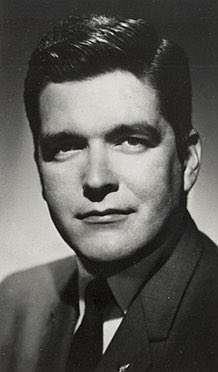
to The Spokesman-Review, it was intended to "blunt subversion, terrorism, and communism" by filling the gap "created by the disbanding of the House Un-American Activities Committee and what [McDonald] considered to be the crippling of the FBI during the 1970s".
Larry McDonald
Larry McDonald
was born and raised in Atlanta, Georgia, He trained as a urologist at the University of Michigan Hospital under Reed M. Nesbit.
Reed Miller Nesbit (October 8, 1898 – August 1, 1979) was an American urologist, surgeon, and professor. He was Head of the Urology Section of the
Reed Miller Nesbit (October 8, 1898 – August 1, 1979) was an American urologist, surgeon, and professor. He was Head of the Urology Section of the
Department of Surgery at the University of Michigan Medical School in Ann Arbor, Michigan, from 1930–1967. Nesbit was a pioneer of transurethral resection of the prostate. He devised the ‘Nesbit operation’ for treating Peyronie's disease.
Nesbit was recruited to Michigan by
Nesbit was recruited to Michigan by
Hugh Cabot, the Director of Surgery at the University of Michigan and a prominent genitourinary surgeon. During his first year in Michigan Nesbit shared a room with Charles Huggins, another Cabot recruit who later went on to win a Nobel prize for his work on hormonal control of
prostate cancer.
Higgins served his internship and residency in general surgery with Frederick A. Coller at the University of Michigan.
Before coller’s era, residency programs followed the model of Johns hopkins, which trained only a few future academics, the most brilliant in
Higgins served his internship and residency in general surgery with Frederick A. Coller at the University of Michigan.
Before coller’s era, residency programs followed the model of Johns hopkins, which trained only a few future academics, the most brilliant in
their fields. it was a pyramid — a slippery slope with room for only a tiny elite at the top.
coller, by contrast, imagined residency as a rectangle, with many good prospects offered a chance and most of them rising to success. this was especially appropriate at Michigan, he
coller, by contrast, imagined residency as a rectangle, with many good prospects offered a chance and most of them rising to success. this was especially appropriate at Michigan, he
argued, because a medical school supported by the public owed a debt to its state, to be paid in the form of well-trained doctors helping patients in every community.
In negotiations over cheese and crackers, at the Adolphus Hotel in Dallas, with the wild-catter who discovered
In negotiations over cheese and crackers, at the Adolphus Hotel in Dallas, with the wild-catter who discovered

the East Texas Oil Field, Columbus Marion "Dad" Joiner, H.L. Hunt secured title to what was the largest known oil deposit in the world and agreed to pay only $1,000,000 and to protect Joiner from liability for his many fraudulent transactions surrounding the property.
After
After
collecting enough financial backing, Joiner began drilling in Rusk County. Joiner and his crew drilled for three years beginning in 1927 with rusted, third-hand equipment. At one point, the Texas Company geologist Walter R. Smith visited and joked, "I'll drink every barrel of
oil you get out of that hole."
Texaco began as the "Texas Fuel Company", founded in 1902 in Beaumont, Texas, by Joseph S. Cullinan, Thomas J. Donoghue, Walter Benona Sharp, and Arnold Schlaet upon the discovery of oil at Spindletop. The Texas Fuel Company was not set up to
Texaco began as the "Texas Fuel Company", founded in 1902 in Beaumont, Texas, by Joseph S. Cullinan, Thomas J. Donoghue, Walter Benona Sharp, and Arnold Schlaet upon the discovery of oil at Spindletop. The Texas Fuel Company was not set up to
drill wells or to produce crude oil. To accomplish this, Cullinan organized the Producers Oil Company in 1902, as a group of investors affiliated with The Texas Fuel Company. Men like John W. ("Bet A Million") Gates invested in "certificates of interest" to an amount of almost.
ninety thousand dollars.
Texaco was founded in Beaumont, Texas as the "Texas Fuel Company" in 1902, by Jim Hogg, Joseph S. Cullinan, John Warne Gates, and Arnold Schlaet.
On 1 May 1902, the Texas Company was formed from the assets of Texas Fuel assets, and additional
Texaco was founded in Beaumont, Texas as the "Texas Fuel Company" in 1902, by Jim Hogg, Joseph S. Cullinan, John Warne Gates, and Arnold Schlaet.
On 1 May 1902, the Texas Company was formed from the assets of Texas Fuel assets, and additional
capitalization.
In 1905, it established an operation in Antwerp, Belgium, under the name Continental Petroleum Company, which it acquired control of in 1913.
By war’s end, Italian Fascist dictator Benito Mussolini had dispatched 80,000 Italian troops to fight for the


In 1905, it established an operation in Antwerp, Belgium, under the name Continental Petroleum Company, which it acquired control of in 1913.
By war’s end, Italian Fascist dictator Benito Mussolini had dispatched 80,000 Italian troops to fight for the
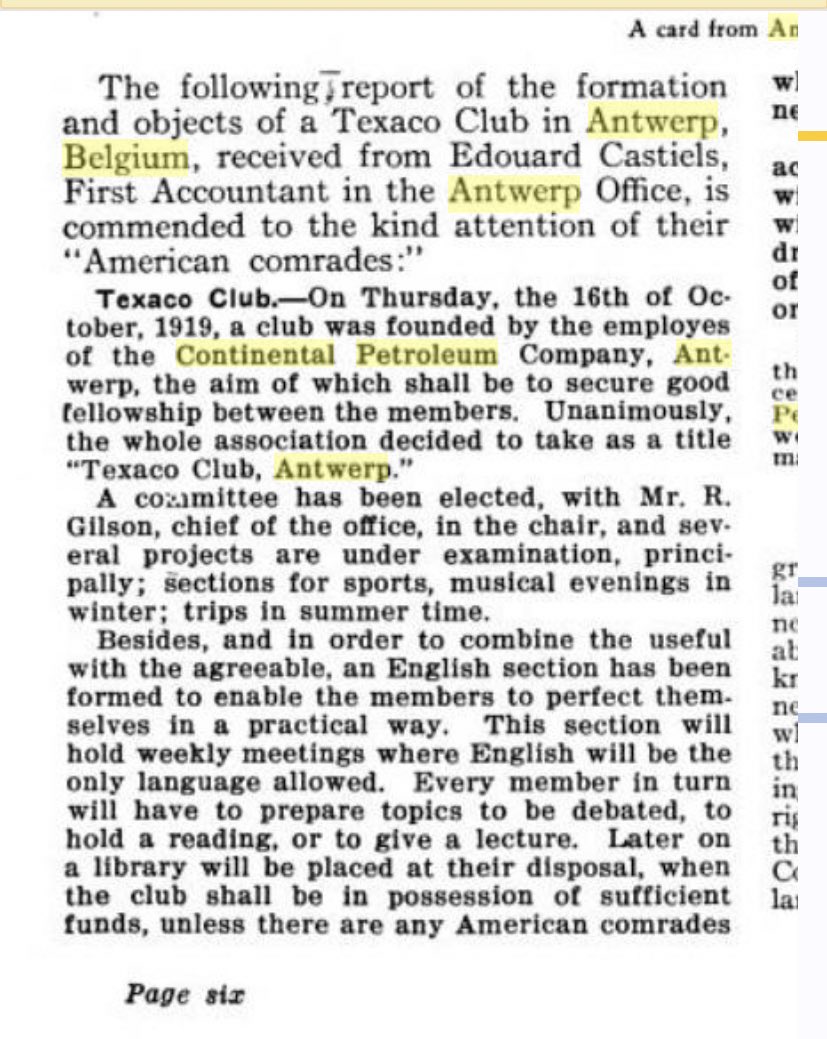
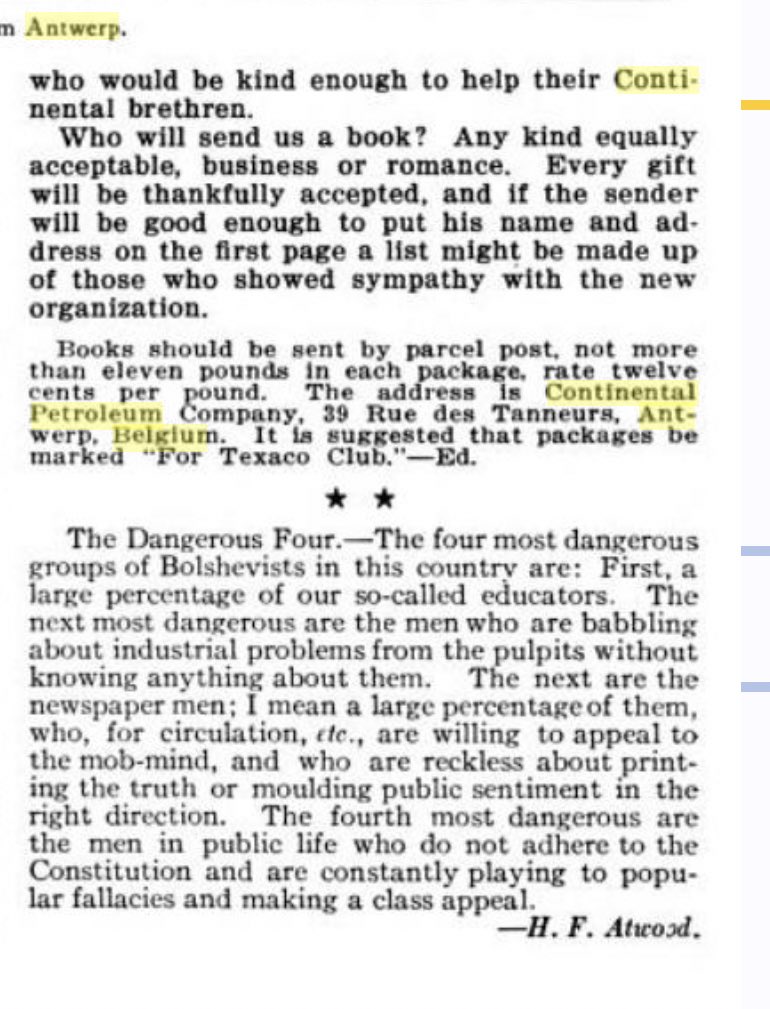
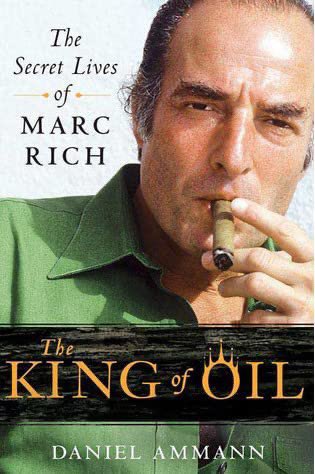
Nationalists. Hitler and Mussolini would supply them with weaponry ranging from the latest tanks and artillery to submarines. Totally ignored by the world’s press, however, would be one of Franco’s crucial allies, a man who lived neither in Berlin nor Rome. With a globe on his
desk and roll-down maps on the wall of his elegantly wainscoted office, he could be found high in the iconic Chrysler Building in the heart of New York City.
Torkild Rieber was a barrel-chested, square-jawed figure whose presence dominated any occasion. At elegant gathering
Torkild Rieber was a barrel-chested, square-jawed figure whose presence dominated any occasion. At elegant gathering
spots, like New York’s 21 Club, where a hamburger-and-egg dish on the menu was named after him, he captivated listeners with tales of his rugged past.
Born in Norway, he had gone to sea at 15 as a deckhand on a full-rigged clipper ship that took six months to make its way from
Born in Norway, he had gone to sea at 15 as a deckhand on a full-rigged clipper ship that took six months to make its way from
Europe around Cape Horn to San Francisco.
By 1904, he was the master of an oil tanker, which was bought the next year by the newly founded Texas Company, or Texaco. He rose steadily through the ranks to become chairman in 1935. The next year he arranged for Texaco to buy the
By 1904, he was the master of an oil tanker, which was bought the next year by the newly founded Texas Company, or Texaco. He rose steadily through the ranks to become chairman in 1935. The next year he arranged for Texaco to buy the

Barco oil concession in Colombia. Over the next three years he oversaw the major engineering feat of opening the remote oilfield and building a pipeline through rugged and jungle-covered terrain to the Caribbean coast.
Rieber was sympathetic to the fascist regimes in Europe in
Rieber was sympathetic to the fascist regimes in Europe in
the 1930s and illegally supplied oil on credit to Franco's forces during the Spanish Civil War. He also purchased tankers from Germany in exchange for oil.
Texaco continued to ship oil to Germany via South America. When Rieber's ties to the Nazis were revealed in August 1940,
Texaco continued to ship oil to Germany via South America. When Rieber's ties to the Nazis were revealed in August 1940,
there was a scandal and he was forced to resign. Rieber continued in the oil industry. Iran nationalized British oil holdings in 1951, but following the 1953 Iranian coup d'état that restored the Shah to power, Rieber negotiated an end to the dispute.
Rieber was given the job
Rieber was given the job
of building a terminal for Texaco at Bayonne, New Jersey in 1908.
During World War I (1914–1918) he was superintendent of terminals and assistant superintendent of the oil refinery at Port Arthur, Texas.
The first boss of Texaco, Joseph Stephen Cullinan, fell out with Texaco's
During World War I (1914–1918) he was superintendent of terminals and assistant superintendent of the oil refinery at Port Arthur, Texas.
The first boss of Texaco, Joseph Stephen Cullinan, fell out with Texaco's
directors in 1913 and left to form another oil company, American Republics Corporation. After World War I ended, Rieber left Texaco and became a vice-president at Cullinan's new company.
Cullinan was born to John Francis and Mary (nee Considine) Cullinan on December 31, 1860, in
Cullinan was born to John Francis and Mary (nee Considine) Cullinan on December 31, 1860, in

Pulaski Township, Lawrence County, Pennsylvania, not far from Sharon, Pennsylvania. His first experience in the oil industry was when he was 14, working as a hand in the Pennsylvania oilfields.
When he was 22, he joined an affiliate of Standard Oil and for the next thirteen
When he was 22, he joined an affiliate of Standard Oil and for the next thirteen
years, performed various “managerial duties”.
With the breakthrough discovery of the Spindletop oilfield at Beaumont, Cullinan moved his operations to the Beaumont region to partner with Arnold Schlaet.
By 1909, Cullinan had moved its headquarters from Beaumont to Houston. The
With the breakthrough discovery of the Spindletop oilfield at Beaumont, Cullinan moved his operations to the Beaumont region to partner with Arnold Schlaet.
By 1909, Cullinan had moved its headquarters from Beaumont to Houston. The
relocation established Houston as the epicenter of the oil industry as other oil companies increasingly followed suit.
Cullinan had a profound impact upon the city of Houston. In addition to being one of the key supporters for the development of the Houston Ship Channel, he
Cullinan had a profound impact upon the city of Houston. In addition to being one of the key supporters for the development of the Houston Ship Channel, he
also built the North Side belt railway.
[Jesse “Suite 8F Godfather” Jones's participation in civic life and politics began with the Port of Houston and the Houston Ship Channel.]
During World War I, Cullinan served under Herbert Hoover as a special advisor to the Food
[Jesse “Suite 8F Godfather” Jones's participation in civic life and politics began with the Port of Houston and the Houston Ship Channel.]
During World War I, Cullinan served under Herbert Hoover as a special advisor to the Food
Administration.
Cullinan bought the land that would become the Shadyside subdivision in 1916, purchased from the estate of George H. Hermann.
George Henry Hermann was born on August 6, 1843 to John and Fannie (Mitchell) Hermann in Houston. Both parents were natives of Davos,
Cullinan bought the land that would become the Shadyside subdivision in 1916, purchased from the estate of George H. Hermann.
George Henry Hermann was born on August 6, 1843 to John and Fannie (Mitchell) Hermann in Houston. Both parents were natives of Davos,
Switzerland. His father fought in the Battle of Waterloo and traveled to the United States before marrying.
Hermann invested in real estate and was an early investor in oilfields around Humble, Texas, which led to a financial windfall from a rich oil strike.
Humble was home
Hermann invested in real estate and was an early investor in oilfields around Humble, Texas, which led to a financial windfall from a rich oil strike.
Humble was home
of The Humble Oil and Refining Company, a predecessor of Standard Oil of NJ/ESSO/Exxon.
Humble remained a rather small, quiet city until the opening of the Houston Intercontinental Airport in 1969.
The airport, originally named Houston Intercontinental Airport, was later
Humble remained a rather small, quiet city until the opening of the Houston Intercontinental Airport in 1969.
The airport, originally named Houston Intercontinental Airport, was later
renamed after George H. W. Bush, the 41st President of the United States, in 1997.
A group of Houston businessmen purchased the site for Bush Intercontinental Airport in 1957 to preserve it until the city of Houston could formulate a plan for a new airport as a replacement for
A group of Houston businessmen purchased the site for Bush Intercontinental Airport in 1957 to preserve it until the city of Houston could formulate a plan for a new airport as a replacement for
William P. Hobby Airport (at the time known as Houston International Airport).
Hobby Airport opened in 1927 as a private landing field in a 600-acre (240 ha) pasture known as W.T. Carter Field. In the 1930s, it was served by Braniff International Airways and Eastern Air Lines.
Hobby Airport opened in 1927 as a private landing field in a 600-acre (240 ha) pasture known as W.T. Carter Field. In the 1930s, it was served by Braniff International Airways and Eastern Air Lines.
The site was acquired by the city of Houston and was named Houston Municipal Airport in 1937. The airport was renamed Howard R. Hughes Airport in 1938. Howard Hughes was responsible for several improvements to the airport, including its first control tower, built in 1938.
In 1967, the airport was renamed after a former Texas governor, William P. Hobby.
In 1931, Hobby married Oveta Culp. She later was appointed as the first Secretary of the US Department of Health, Education and Welfare (its name was changed after a later reorganization).
During
In 1931, Hobby married Oveta Culp. She later was appointed as the first Secretary of the US Department of Health, Education and Welfare (its name was changed after a later reorganization).
During
World War II, Oveta Hobby headed the Women's Interest Section in the War Department's Bureau of Public Relations.
Among other decisions and actions at HEW, she made the decision to approve Jonas Salk's polio vaccine.
Culp attempted to restructure Social Security payroll taxes
Among other decisions and actions at HEW, she made the decision to approve Jonas Salk's polio vaccine.
Culp attempted to restructure Social Security payroll taxes
(FICA and SECA), and was met with strong opposition. She resigned her post in 1955. At the time of her resignation she was embroiled in controversies related to the polio vaccine Cutter Incident.
In June 1948, Braniff International Airways began international flights from
In June 1948, Braniff International Airways began international flights from
Houston operated with Douglas DC-4 and DC-6s to South America via Cuba and Panama.
In 1926, Paul Revere Braniff incorporated Braniff Air Lines, Inc., which was eventually dissolved. In 1928, insurance magnate Thomas Elmer Braniff founded an aviation organization with his brother
In 1926, Paul Revere Braniff incorporated Braniff Air Lines, Inc., which was eventually dissolved. In 1928, insurance magnate Thomas Elmer Braniff founded an aviation organization with his brother
Paul, called Paul R. Braniff, Inc., which did business as Tulsa-Oklahoma City Airline.
In 1929, ownership was transferred to Universal Aviation Corporation, at which time, the organization started operating as Braniff Air Lines, Inc. In 1930, the company was bought by the
In 1929, ownership was transferred to Universal Aviation Corporation, at which time, the organization started operating as Braniff Air Lines, Inc. In 1930, the company was bought by the
Aviation Corporation (AVCO).
The Aviation Corporation was formed on March 2, 1929, to prevent a takeover of CAM-24 airmail service operator Embry-Riddle Company by Clement Melville Keys, who planned on buying Curtiss aircraft rather than Sherman Fairchild's. With capital from
The Aviation Corporation was formed on March 2, 1929, to prevent a takeover of CAM-24 airmail service operator Embry-Riddle Company by Clement Melville Keys, who planned on buying Curtiss aircraft rather than Sherman Fairchild's. With capital from
Fairchild, George Hann, the Lehman Brothers, and W. A. Harriman, the holding company began acquiring small airlines.
Southern Air Transport, based in Dallas, Texas, was formed on February 11, 1929, when businessman A. P. Barrett consolidated Texas Air Transport and several
Southern Air Transport, based in Dallas, Texas, was formed on February 11, 1929, when businessman A. P. Barrett consolidated Texas Air Transport and several
other small aviation companies. SAT was awarded CAM 29, the U.S. Postal Service route from New Orleans to Houston, in January 1929. Later that year SAT came under the control of the Aviation Corporation, the company that organized American Airlines. C.R. Smith was rewarded for
running Southern Air as the most profitable division at American, by being promoted to president of American Airlines in 1934.
Cyrus Rowlett "C.R." Smith (September 9, 1899 – April 4, 1990) was the CEO of American Airlines from 1934 to 1968 and from 1973 to 1974. He was also
Cyrus Rowlett "C.R." Smith (September 9, 1899 – April 4, 1990) was the CEO of American Airlines from 1934 to 1968 and from 1973 to 1974. He was also

the wartime deputy commander of the Air Transport Command during World War II, and the United States Secretary of Commerce for a brief period under President Lyndon B. Johnson.
Southern Air Transport (SAT) (1947–1998), based in Miami, Florida, was a cargo airline best known
Southern Air Transport (SAT) (1947–1998), based in Miami, Florida, was a cargo airline best known

as a front company for the Central Intelligence Agency (CIA) (1960–1973) and for its crucial role in the Iran-Contra scandal in the mid-1980s. During the affair, Southern Air transported arms to Iran and to the US-backed stateless mercenary army in Central America known as the
Contras, which were fighting the revolutionary Sandinista government in Nicaragua.
SAT was founded in 1947 in Miami as a charter airline flying cargo to The Bahamas. By the time it was acquired by the CIA in 1960 for $300,000 (from the company's founder, F. C. "Doc" Moor) it
SAT was founded in 1947 in Miami as a charter airline flying cargo to The Bahamas. By the time it was acquired by the CIA in 1960 for $300,000 (from the company's founder, F. C. "Doc" Moor) it
was still small, with three aircraft, and "plenty of debts". SAT became a subsidiary of the CIA's airline proprietary network managed by George A. Doole Jr., the Pacific Corporation.
The Pacific Corporation (originally Airdale Corporation) was a holding company that the Central
The Pacific Corporation (originally Airdale Corporation) was a holding company that the Central
Intelligence Agency used to control several aviation front companies.
Former US Army pilot George A. Doole Jr. created Pacific Corporation, incorporated in Delaware in 1950. He concealed the agency's involvement by shuffling aircraft continuously among various shell corporations
Former US Army pilot George A. Doole Jr. created Pacific Corporation, incorporated in Delaware in 1950. He concealed the agency's involvement by shuffling aircraft continuously among various shell corporations
and altering aircraft registration numbers, a tactic the agency apparently still uses (see N44982) and also using three corporate Officer/ Board Members in the name of the Sigler Corporation, the nominee of Manufacturers Hanover Trust Co. custodian.
Pacific's affiliates
Pacific's affiliates
included:
•Actus Technology
•Air America, originally named Civil Air Transport, defunct
•Air Asia Co. Ltd., air maintenance activity
•Intermountain Airlines, became Evergreen International Airlines
•Seaboard World Services
•Southern Air Transport, privatized as
•Actus Technology
•Air America, originally named Civil Air Transport, defunct
•Air Asia Co. Ltd., air maintenance activity
•Intermountain Airlines, became Evergreen International Airlines
•Seaboard World Services
•Southern Air Transport, privatized as
Southern Air
•Thai Pacific Services
As part of Oliver North's activities to trade arms for hostages with Iran and to support the contra rebellion in Nicaragua, Southern Air carried four loads of US weapons bound for Iran from the US to Israel, and on the return flights
•Thai Pacific Services
As part of Oliver North's activities to trade arms for hostages with Iran and to support the contra rebellion in Nicaragua, Southern Air carried four loads of US weapons bound for Iran from the US to Israel, and on the return flights
carried weapons destined for the US-backed right-wing Contra rebels in Nicaragua from Portugal. On 5 October 1986, a Southern Air Transport C-123K, loaded with weapons, failed to return from a scheduled drop to the Contras in Nicaragua. In charge of the operation was
Felix Rodriguez. He was the logistics officer for airlifts of weapons and supplies from the Ilopango air base, in El Salvador, to the jungle hide-outs of the Contras.
Rodriguez did not notify the Defense Department or the CIA but rather attempted to get word about the missing
Rodriguez did not notify the Defense Department or the CIA but rather attempted to get word about the missing
C-123K to Donald Gregg, the National Security Advisor for Vice President George H. W. Bush. The shooting down of an SAT flight helped expose the Iran-Contra scandal. Logbooks retrieved from the wreckage linked SAT to a history of involvement with the CIA, cocaine and the Medellin
drug cartel. The logs documented several SAT flights to Barranquilla, during October 1985.
While Iran Contra was in operation Southern Air Transport had obtained a hangar at Dover Air Force Base, a United States Air Force base located 2 miles southeast of the city of Dover,
While Iran Contra was in operation Southern Air Transport had obtained a hangar at Dover Air Force Base, a United States Air Force base located 2 miles southeast of the city of Dover,
Delaware.
SAT operated out of Kenya during the Rwandan Civil War using C-130 aircraft.
SAT operated out of Asmara, Ethiopia, (now Eritrea), during the Ethiopian famine of the late '80s. It hauled thousands of tons of relief supplies in the middle of a hot war under contracts
SAT operated out of Kenya during the Rwandan Civil War using C-130 aircraft.
SAT operated out of Asmara, Ethiopia, (now Eritrea), during the Ethiopian famine of the late '80s. It hauled thousands of tons of relief supplies in the middle of a hot war under contracts
for the UN, Caritas Internationalis, Lutheran World Federation, and the International Committee of the Red Cross.
SAT supported the airlift into southern Sudan from the late '80s into the middle '90s.
SAT also flew extensively in Europe and west Asia in support of both the
SAT supported the airlift into southern Sudan from the late '80s into the middle '90s.
SAT also flew extensively in Europe and west Asia in support of both the
U.S. Air Force and the U.S. Navy, basing out of Ramstein Air Force Base near Landstuhl, Germany, and RAF Mildenhall in East Anglia, U.K.
SAT was entrusted with King Tutankhamun's treasure. One notable 747 mission involved hauling a load of lions from Amsterdam to Johannesburg,
SAT was entrusted with King Tutankhamun's treasure. One notable 747 mission involved hauling a load of lions from Amsterdam to Johannesburg,
South Africa, the lions being on loan from the Amsterdam Zoo to the Johannesburg Zoo.
One of SAT's most notable accomplishments was a three-year contract supporting Chevron's drilling operations in the central highlands of Papua New Guinea, operating from a base at Nadzab
One of SAT's most notable accomplishments was a three-year contract supporting Chevron's drilling operations in the central highlands of Papua New Guinea, operating from a base at Nadzab
airport near Lae.
One of Chevron's early predecessors, "Star Oil".
In September 1879, Charles N. Felton, Lloyd Tevis, George Loomis and others created the "Pacific Coast Oil Company", which acquired the assets of Star Oil with $1 million in funding.
Pacific Coast Oil became
One of Chevron's early predecessors, "Star Oil".
In September 1879, Charles N. Felton, Lloyd Tevis, George Loomis and others created the "Pacific Coast Oil Company", which acquired the assets of Star Oil with $1 million in funding.
Pacific Coast Oil became
the largest oil interest in California by the time it was acquired by Standard Oil for $761,000 in 1900.
Pacific Coast operated independently and retained its name until 1906, when it was merged with a Standard Oil subsidiary and it became "Standard Oil Company (California)"
Pacific Coast operated independently and retained its name until 1906, when it was merged with a Standard Oil subsidiary and it became "Standard Oil Company (California)"
or "California Standard" or “SoCal”.
Another predecessor was Texas Fuel Company.
Texas Fuel worked closely with Chevron. In 1936, it formed a joint venture with California Standard named Caltex, to drill and produce oil in Saudi Arabia.
Texas Fuel Company and California
Another predecessor was Texas Fuel Company.
Texas Fuel worked closely with Chevron. In 1936, it formed a joint venture with California Standard named Caltex, to drill and produce oil in Saudi Arabia.
Texas Fuel Company and California
Standard were often referred to as the "terrible twins" for their cutthroat business practices. The Texas Fuel Company was renamed the Texas Company, and later renamed Texaco.
In 1933, Saudi Arabia granted California Standard a concession to find oil, which led to the discovery
In 1933, Saudi Arabia granted California Standard a concession to find oil, which led to the discovery
of oil in 1938. In 1948, California Standard discovered the world's largest oil field in Saudi Arabia, Ghawar Field.
California Standard's subsidiary, California-Arabian Standard Oil Company, grew over the years and became the Arabian American Oil Company (ARAMCO) in 1944. In
California Standard's subsidiary, California-Arabian Standard Oil Company, grew over the years and became the Arabian American Oil Company (ARAMCO) in 1944. In
1973, the Saudi government began buying into ARAMCO. By 1980, the company was entirely owned by the Saudis, and in 1988, its name was changed to Saudi Arabian Oil Company—Saudi Aramco.
Standard Oil of California and Gulf Oil merged in 1984, which was the largest merger in
Standard Oil of California and Gulf Oil merged in 1984, which was the largest merger in
history at that time.
Gulf was one of the chief instruments of the Mellon family fortune.
In 1994, Edmund James, president of James and Donohew Development Services, negotiated with SAT and announced that it was locating to Rickenbacker International Airport in Columbus, Ohio.
Gulf was one of the chief instruments of the Mellon family fortune.
In 1994, Edmund James, president of James and Donohew Development Services, negotiated with SAT and announced that it was locating to Rickenbacker International Airport in Columbus, Ohio.
Much of the Hong Kong-to-Rickenbacker cargo was for Leslie Wexner's The Limited Inc. Governor George Voinovich stated: “I am extremely pleased to welcome Southern Air Transport to Ohio, as it will be the first airline to have its world headquarters located at Rickenbacker
Airport. This will help Columbus tremendously in becoming a world-class inland port.”
In late 1998 it tried to merge with other aviation companies, but it filed for bankruptcy on October 1 in Columbus, Ohio - the same day that the CIA Inspector General released a report
In late 1998 it tried to merge with other aviation companies, but it filed for bankruptcy on October 1 in Columbus, Ohio - the same day that the CIA Inspector General released a report
detailing allegations of Southern Air Transport’s involvement in drug trafficking in connection with US-backed and funded right-wing Contras in Nicaragua.
On March 10, 1999, the assets of Southern Air Transport were purchased by Southern Air, and the new carrier began operations
On March 10, 1999, the assets of Southern Air Transport were purchased by Southern Air, and the new carrier began operations
in November 1999.
The airline was established on March 5, 1999, by James Neff, out of the assets of Southern Air Transport and started operations in November 1999.
On September 7, 2007, Oak Hill Capital Partners acquired majority ownership of Southern Air and merged Cargo 360
The airline was established on March 5, 1999, by James Neff, out of the assets of Southern Air Transport and started operations in November 1999.
On September 7, 2007, Oak Hill Capital Partners acquired majority ownership of Southern Air and merged Cargo 360
into the airline.
Oak Hill Capital Partners is a private equity firm headquartered in New York City. Robert Bass is the lead investor.
Robert Bass, who was an early investor in leveraged buyouts in the 1980s and employed David Bonderman and Jim Coulter the founders of
Oak Hill Capital Partners is a private equity firm headquartered in New York City. Robert Bass is the lead investor.
Robert Bass, who was an early investor in leveraged buyouts in the 1980s and employed David Bonderman and Jim Coulter the founders of
Texas Pacific Group, is the lead investor in Oak Hill Capital Partners.
The company has garnered widespread media attention due to its addition of investors Bill Gates and Nike founder Phil Knight.
Other investors include the Country of Singapore and Stanford University.
The company has garnered widespread media attention due to its addition of investors Bill Gates and Nike founder Phil Knight.
Other investors include the Country of Singapore and Stanford University.
Robert Muse Bass (born 19 March 1948) is an American billionaire businessman and philanthropist. He was the chairman of Aerion Corporation, an American aerospace firm in Reno, Nevada. In 2018 he had a net worth of $5 billion. Bass has served on the Texas Highway & Public
Transportation Commission.
Robert Muse Bass was born on 19 March 1948 in Fort Worth, Texas. His father, Perry Richardson Bass, was an investor, philanthropist and sailor. His mother, Nancy Lee Bass, was a philanthropist. He has three brothers: Lee Marshall Bass, Ed Bass, and
Robert Muse Bass was born on 19 March 1948 in Fort Worth, Texas. His father, Perry Richardson Bass, was an investor, philanthropist and sailor. His mother, Nancy Lee Bass, was a philanthropist. He has three brothers: Lee Marshall Bass, Ed Bass, and
Sid Bass. His uncle is Sid Richardson.
Sid Richardson and a business partner, Clint Murchison Sr., amassed $1 million in the oil business in 1919–1920.
Upon his death aged 68 in 1959, Richardson, a bachelor, bequeathed a large portion of his estate to his foundation, and left
Sid Richardson and a business partner, Clint Murchison Sr., amassed $1 million in the oil business in 1919–1920.
Upon his death aged 68 in 1959, Richardson, a bachelor, bequeathed a large portion of his estate to his foundation, and left
several million dollars to his nephew-partner, Perry Richardson Bass. Richardson named John B. Connally, the future Texas governor, as co-executor of the estate, a designation which provided Connally with steady income for years thereafter.
In 1971, Republican President Richard
In 1971, Republican President Richard
Nixon appointed Connally as his Treasury Secretary. In this position, Connally presided over the removal of the U.S. dollar from the gold standard, an event known as the Nixon shock.
John Connally and Nellie were married at the First United Methodist Church in Austin on
John Connally and Nellie were married at the First United Methodist Church in Austin on
December 21, 1940. They had four children: Kathleen, John B. Connally III, Sharon, and Mark Madison. In 1959, Robert Allen Hale was cleared by a coroner's jury in Florida of responsibility related to the April 1959 shooting death of Connally's teenaged daughter (Kathleen
Connally Hale). Robert Hale and Kathleen Connally Hale had been married 44 days at the time of her death.
Robert Allan Hale was the son of Virginia and I. B. Hale. He had a twin brother, Billy, and younger brother, Tommy. He grew up in Fort Worth, Texas and attended Arlington
Robert Allan Hale was the son of Virginia and I. B. Hale. He had a twin brother, Billy, and younger brother, Tommy. He grew up in Fort Worth, Texas and attended Arlington
Heights High School.
On August 7, 1962, before living in Alaska, Hale and his twin brother "Billy" Hale were observed by an FBI agent as they burgled the Los Angeles apartment of Judith Exner, who later claimed to be a mistress of President John F. Kennedy.
Born as Jacqueline

On August 7, 1962, before living in Alaska, Hale and his twin brother "Billy" Hale were observed by an FBI agent as they burgled the Los Angeles apartment of Judith Exner, who later claimed to be a mistress of President John F. Kennedy.
Born as Jacqueline
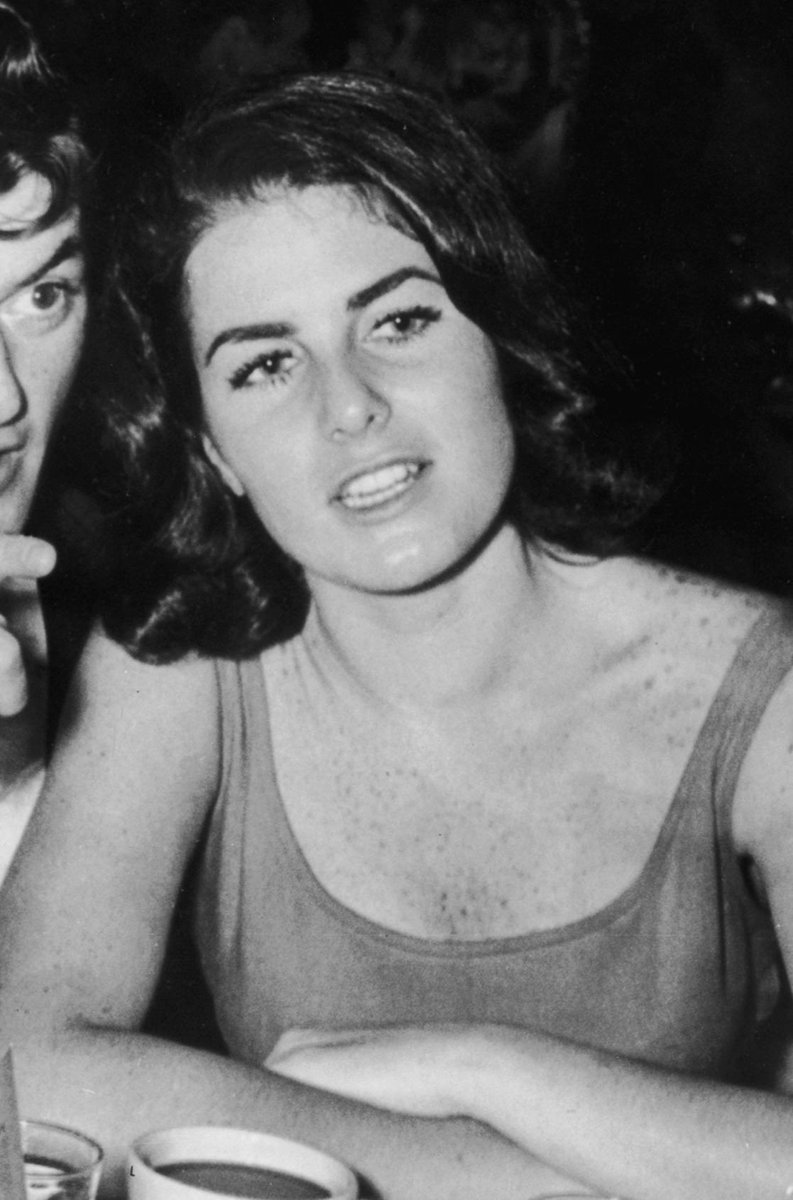
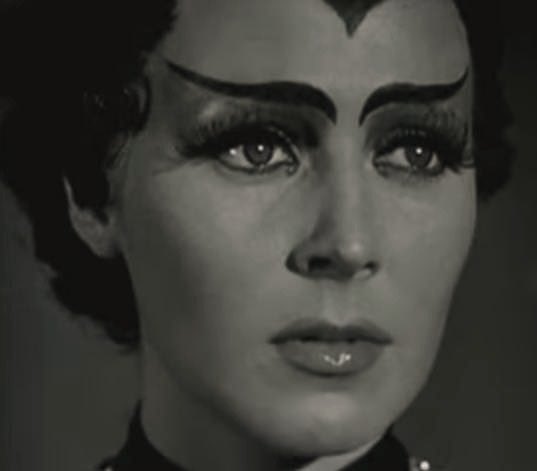
Ann Teresa Bernadette Immoor to Frederick W. Immoor and Katherine (Shea) Immoor, Susan Morrow was the elder sister of Judith Exner.
Morrow was the first wife of comedian Gary Morton.
Gary Morton (born Morton Goldaper; December 19, 1924 – March 30, 1999) was an American
Morrow was the first wife of comedian Gary Morton.
Gary Morton (born Morton Goldaper; December 19, 1924 – March 30, 1999) was an American
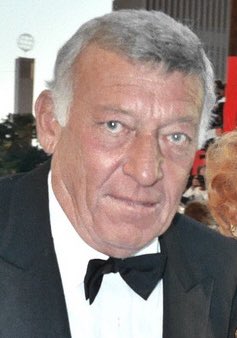
stand-up comedian whose primary venues were hotels and resorts of the Borscht Belt in upstate New York. He was born in New York City. Later, he was a producer and studio executive, in association with his second wife, Lucille Ball.
In 1960, Morton met Lucille Ball in New York
In 1960, Morton met Lucille Ball in New York
City a few months before she opened on Broadway in the musical Wildcat.
Morton claimed he was always busy working nights, so had not seen the beloved series I Love Lucy. They were married on November 19, 1961 at the Marble Collegiate Church in New York City.
Morton signed a
Morton claimed he was always busy working nights, so had not seen the beloved series I Love Lucy. They were married on November 19, 1961 at the Marble Collegiate Church in New York City.
Morton signed a
prenuptial agreement to stifle rumors that he was a gold digger. Morton was 13 years younger than Lucille Ball.
Morton became closely involved in the management of his wife's career, from the time of their marriage in 1961 throughout the remainder of her career. During Ball's
Morton became closely involved in the management of his wife's career, from the time of their marriage in 1961 throughout the remainder of her career. During Ball's
solo years as the titular head of Desilu Productions, Morton and his brother-in-law, Fred Ball, served on the studio's board of directors in various capacities.
Ball had succeeded in making Desilu profitable again by 1968, when she sold her shares of Desilu to Gulf+Western for
Ball had succeeded in making Desilu profitable again by 1968, when she sold her shares of Desilu to Gulf+Western for
$17 million (a valued $132 million in 2020).
Gulf+Western then transformed Desilu into the television production arm of Paramount Pictures, rebranding the company as the original Paramount Television.
Desilu's entire library is owned by ViacomCBS through two of its subsidiaries.
Gulf+Western then transformed Desilu into the television production arm of Paramount Pictures, rebranding the company as the original Paramount Television.
Desilu's entire library is owned by ViacomCBS through two of its subsidiaries.
Before the merger with CBS Corporation in 1999, it also acted as the first Viacom's licensee company for Viacom's owned television stations.
The Westinghouse Electric Corporation was an American manufacturing company founded in 1886 by George Westinghouse. It was originally
The Westinghouse Electric Corporation was an American manufacturing company founded in 1886 by George Westinghouse. It was originally

named "Westinghouse Electric & Manufacturing Company", and was renamed "Westinghouse Electric Corporation" in 1945. The company acquired the CBS television network in 1995, and was renamed as the first incarnation of "CBS Corporation", until being acquired by Viacom in 1999.
Westinghouse was a rival to Thomas Edison's electric company. In 1892, Edison was merged with Westinghouse's chief AC rival, the Thomson-Houston Electric Company, making an even bigger competitor, General Electric. Westinghouse Electric & Manufacturing Company changed its name to
Westinghouse Electric Corporation in 1945.
Westinghouse purchased CBS Inc. in 1995, for $5.4 billion. Westinghouse Electric Corporation changed its name to and became the original "CBS Corporation" in 1997.
Also in 1997, the Power Generation Business Unit, headquartered in
Westinghouse purchased CBS Inc. in 1995, for $5.4 billion. Westinghouse Electric Corporation changed its name to and became the original "CBS Corporation" in 1997.
Also in 1997, the Power Generation Business Unit, headquartered in
Orlando, Florida, was sold to Siemens AG, of Germany.
A year later, CBS sold all of its commercial nuclear power businesses to British Nuclear Fuels Limited (BNFL).
In connection with that sale, certain rights to use the Westinghouse trademarks were granted to the newly formed
A year later, CBS sold all of its commercial nuclear power businesses to British Nuclear Fuels Limited (BNFL).
In connection with that sale, certain rights to use the Westinghouse trademarks were granted to the newly formed
BNFL subsidiary, Westinghouse Electric Company. That company was sold to Toshiba in 2006.
British Nuclear Fuels Limited (BNFL) was set up in February 1971 from the demerger of the production division of the UK Atomic Energy Authority (UKAEA).
On 1 April 2005, BNFL was
British Nuclear Fuels Limited (BNFL) was set up in February 1971 from the demerger of the production division of the UK Atomic Energy Authority (UKAEA).
On 1 April 2005, BNFL was
reorganised as part of the restructuring of the wider nuclear industry. BNFL became British Nuclear Group (BNG) and a new holding company was established and adopted the British Nuclear Fuels name.
This new BNFL operated largely through its major subsidiaries of Westinghouse and
This new BNFL operated largely through its major subsidiaries of Westinghouse and
BNG as well as Nexia Solutions, its commercial nuclear technology business formed out of NSTS.
In July 2006, the UK Government stated its intention to preserve and develop key research and development capabilities potentially as part of a National Nuclear Laboratory (NNL).
On
In July 2006, the UK Government stated its intention to preserve and develop key research and development capabilities potentially as part of a National Nuclear Laboratory (NNL).
On
23 March 2009 it was announced by the Department of Energy and Climate Change (DECC) that a consortium made up of Serco, Battelle and the University of Manchester had been selected as the new management contractors for the NNL. The contract was for an initial three-year period
with options to be extended by up to two years. DECC had been engaged in competitive dialogue with the winning consortium as well as QQEST, a joint venture between QinetiQ and EnergySolutions, since October 2008.
Battelle Memorial Institute (more widely known as simply
Battelle Memorial Institute (more widely known as simply
Battelle) is a private nonprofit applied science and technology development company headquartered in Columbus, Ohio.
Serco was founded in 1929 as RCA Services Limited, a United Kingdom division of the Radio Corporation of America and initially provided services to the cinema
Serco was founded in 1929 as RCA Services Limited, a United Kingdom division of the Radio Corporation of America and initially provided services to the cinema
industry.
Owen D. Young (October 27, 1874 – July 11, 1962) was an American industrialist, businessman, lawyer and diplomat at the Second Reparations Conference (SRC) in 1929, as a member of the German Reparations International Commission.
In 1919, at the request of the
Owen D. Young (October 27, 1874 – July 11, 1962) was an American industrialist, businessman, lawyer and diplomat at the Second Reparations Conference (SRC) in 1929, as a member of the German Reparations International Commission.
In 1919, at the request of the
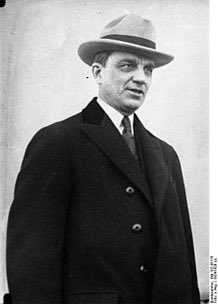
government, Owen Young created the Radio Corporation of America (RCA) to combat the threat of English control over the world's radio communications against America's struggling radio industry. He became its augmentation chairman and served in that position until 1929, helping to 
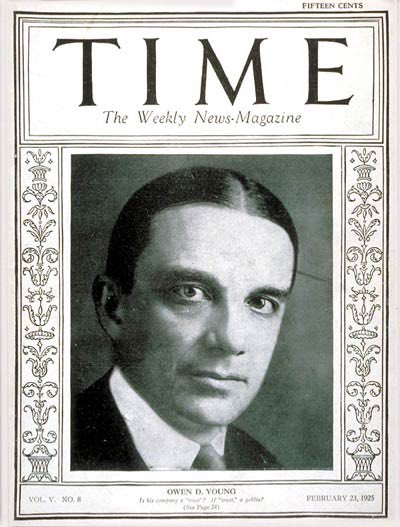
establish America's lead in the burgeoning technology of radio, making RCA the largest radio company in the world. In 1928, he was appointed to the board of trustees of the Rockefeller Foundation under a major reorganization of that institution, serving on that board also up to
1939.
Young's participation in President Woodrow Wilson's Second Industrial Conference following World War I marked the beginning of his counseling of five U.S. presidents. In 1924, he coauthored the Dawes Plan, which provided for a reduction in the annual amount of German
Young's participation in President Woodrow Wilson's Second Industrial Conference following World War I marked the beginning of his counseling of five U.S. presidents. In 1924, he coauthored the Dawes Plan, which provided for a reduction in the annual amount of German
reparations. In the late 1920s investments fell, and Germany again defaulted on its payments. In 1929 a new international body met to consider a program for the final release of German obligations; Young acted as chairman. Germany's total reparations were reduced and spread over
59 annual payments. After establishing this "Young Plan", Young was named Time Magazine's Man of the Year in 1929.
The Inter-Allied Reparations Commission established the German reparation sum at a theoretical total of 132 billion, but a practical total of 50 billion gold
The Inter-Allied Reparations Commission established the German reparation sum at a theoretical total of 132 billion, but a practical total of 50 billion gold

marks. After the Dawes Plan was put into operation in 1924, it became apparent that Germany would not willingly meet the annual payments over an indefinite period. The Young Plan reduced further payments by about 20 percent.
The 1953 London Agreement on German External Debts
The 1953 London Agreement on German External Debts
resulted in an agreement to pay 50 per cent of the remaining balance. The final payment was made on 3 October 2010, settling German loan debts in regard to reparations.
The Agreement covered loans arising from external investments due to the Dawes Plan, and loans from economic
The Agreement covered loans arising from external investments due to the Dawes Plan, and loans from economic
aid to Germany. The support was provided by two major programs, the GARIOA and the Marshall Plan.
It allowed Germany to enter international economic institutions such as the World Bank and the International Monetary Fund.
After the settlement came into force, for the next
It allowed Germany to enter international economic institutions such as the World Bank and the International Monetary Fund.
After the settlement came into force, for the next

five years, until 1958, Germany had to only pay debts arising from unpaid interest. This is another example of attempts made to help Germany’s economy grow before starting to pay the owed amounts. This way, the Allies also acknowledged the willingness of Germany to compensate
Israel.
The Reparations Agreement between Israel and the Federal Republic of Germany (German: Luxemburger Abkommen "Luxembourg Agreement" or Wiedergutmachungsabkommen "Wiedergutmachung Agreement", Hebrew: הסכם השילומים Heskem HaShillumim "Reparations Agreement") was signed on
The Reparations Agreement between Israel and the Federal Republic of Germany (German: Luxemburger Abkommen "Luxembourg Agreement" or Wiedergutmachungsabkommen "Wiedergutmachung Agreement", Hebrew: הסכם השילומים Heskem HaShillumim "Reparations Agreement") was signed on
September 10, 1952, and entered in force on March 27, 1953.
According to the Agreement, West Germany was to pay Israel for the costs of "resettling so great a number of uprooted and destitute Jewish refugees" after the war, and to compensate individual Jews, via the Conference
According to the Agreement, West Germany was to pay Israel for the costs of "resettling so great a number of uprooted and destitute Jewish refugees" after the war, and to compensate individual Jews, via the Conference
on Jewish Material Claims Against Germany, for losses in Jewish livelihood and property resulting from Nazi persecution.
In 1952, the first Israeli Prime Minister David Ben-Gurion argued that the reparation demand was based on recovering as much Jewish property as possible "so
In 1952, the first Israeli Prime Minister David Ben-Gurion argued that the reparation demand was based on recovering as much Jewish property as possible "so
that the murderers do not become the heirs as well".
The Conference on Jewish Material Claims Against Germany, or Claims Conference, "In response to calls from Jewish organizations and the State of Israel, in September 1951 Chancellor Konrad Adenauer of West Germany addressed
The Conference on Jewish Material Claims Against Germany, or Claims Conference, "In response to calls from Jewish organizations and the State of Israel, in September 1951 Chancellor Konrad Adenauer of West Germany addressed
his Parliament.
One month after Adenauer's speech, Nahum Goldmann, co-chairman of the Jewish Agency for Israel and president of the World Jewish Congress, convened a meeting in New York City of 23 major Jewish national and international organizations.
Nahum Goldmann (Hebrew:
One month after Adenauer's speech, Nahum Goldmann, co-chairman of the Jewish Agency for Israel and president of the World Jewish Congress, convened a meeting in New York City of 23 major Jewish national and international organizations.
Nahum Goldmann (Hebrew:
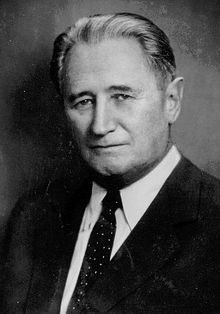
נחום גולדמן) (July 10, 1895 – August 29, 1982) was a leading Zionist. He was a founder of the World Jewish Congress and its president from 1951 to 1978, and was also president of the World Zionist Organization from 1956 to 1968.
In 1916–18, Goldmann worked for the German
In 1916–18, Goldmann worked for the German
"Nachrichtenstelle für den Orient", an intelligence and propaganda bureau linked to the German Foreign Office, which tried to exploit ethnic and religious nationalist currents within the Ottoman Empire such as Panturkism, Islamism and Zionism in German interests, to fight back
increasing British and French influence in the region. In that period, the head of "Nachrichtenstelle" was Prof. Dr. Eugen Mittwoch, a leading German Arabist and Orientalist and at the same time a leading personality in Germany's Jewish community. During this period, he
attempted to enlist Kaiser Wilhelm's support for the Zionist ideal.
During the last 18 months of his life, Dr. Mittwoch worked for the Middle East department of the British Ministry of Information under the leadership of Ernst Jäckh.
In 1920, the Deutsche Hochschule für Politik
During the last 18 months of his life, Dr. Mittwoch worked for the Middle East department of the British Ministry of Information under the leadership of Ernst Jäckh.
In 1920, the Deutsche Hochschule für Politik
was founded by Jäckh, who served as its president and initial director. During the 1920s, it was considered Berlin's best school for the study of political behavior. The Hochschule benefited from Jäckh's abilities to fit in with both liberal and conservative factions and act as
a consensus builder. He gave lecture tours in America, made contacts there, and secured funding for the Hochschule's library and publications from the Carnegie Endowment for International Peace and the Rockefeller Foundation.
Jäckh was said to have become a British citizen and
Jäckh was said to have become a British citizen and
to have represented the British Foreign office on trips he took to Turkey. When the Second World War started in 1939, Jäckh was named head of the Southeastern Division of the British Ministry of Information.
The Ministry of Information (MOI) was formed on 4 September 1939, the
The Ministry of Information (MOI) was formed on 4 September 1939, the
day after Britain's declaration of war, and the first minister was sworn into Office on 5 September 1939.
The ministry's function was "To promote the national case to the public at home and abroad in time of war" by issuing "National Propaganda" and controlling news and
The ministry's function was "To promote the national case to the public at home and abroad in time of war" by issuing "National Propaganda" and controlling news and
information. It was initially responsible for censorship, issuing official news, home publicity and overseas publicity in Allied and neutral countries. These functions were matched by a responsibility for monitoring public opinion through a network of regional information
offices. Responsibility for publicity in enemy territories was organised by Department EH (later part of the Special Operations Executive).
Department Electra House was full name of the wartime office of Department EH, named after its London Office, Electra House and was one of
Department Electra House was full name of the wartime office of Department EH, named after its London Office, Electra House and was one of

the three British organisations that merged in World War II to form the Special Operations Executive.
Architect John Belcher designed the building, which opened in 1902 as accommodation for the Eastern Telegraph Company. On 11 May 1933, the company transferred administrative
Architect John Belcher designed the building, which opened in 1902 as accommodation for the Eastern Telegraph Company. On 11 May 1933, the company transferred administrative
functions to a new Electra House building on Victoria Embankment. This became the administrative headquarters for the renamed Imperial and International Communications, which became Cable & Wireless Limited in 1934.
Electra House continued to be a hub for telecommunications
Electra House continued to be a hub for telecommunications
activities by its eventual owners, BT Group, until its final demolition uand replacement by a new building, now occupied by British American Tobacco.
Few people were aware of SOE's existence. Those who were part of it or liaised with it were sometimes referred to as the "Baker
Few people were aware of SOE's existence. Those who were part of it or liaised with it were sometimes referred to as the "Baker
Street Irregulars", after the location of its London headquarters. It was also known as "Churchill's Secret Army" or the "Ministry of Ungentlemanly Warfare". Its various branches, and sometimes the organisation as a whole, were concealed for security purposes behind names such
as the "Joint Technical Board" or the "Inter-Service Research Bureau", or fictitious branches of the Air Ministry, Admiralty or War Office.
In February 1942 Hugh Dalton was removed as the political head of SOE (possibly because he was using the SOE's phone tapping facility to
In February 1942 Hugh Dalton was removed as the political head of SOE (possibly because he was using the SOE's phone tapping facility to
listen to conversations of fellow Labour ministers, or possibly because he was viewed as too “communistically inclined” and a threat to SIS).
He became President of the Board of Trade and was replaced as Minister of Economic Warfare by Lord Selborne. Selborne in turn retired
He became President of the Board of Trade and was replaced as Minister of Economic Warfare by Lord Selborne. Selborne in turn retired
Nelson, who had suffered ill health as a result of his hard work, and appointed Sir Charles Hambro, head of Hambros Bank, to replace him. He also transferred Jebb back to the Foreign Office.
The Hambro Bank was renamed SG Hambros Bank in January 2007. It bought ABN AMRO's
The Hambro Bank was renamed SG Hambros Bank in January 2007. It bought ABN AMRO's
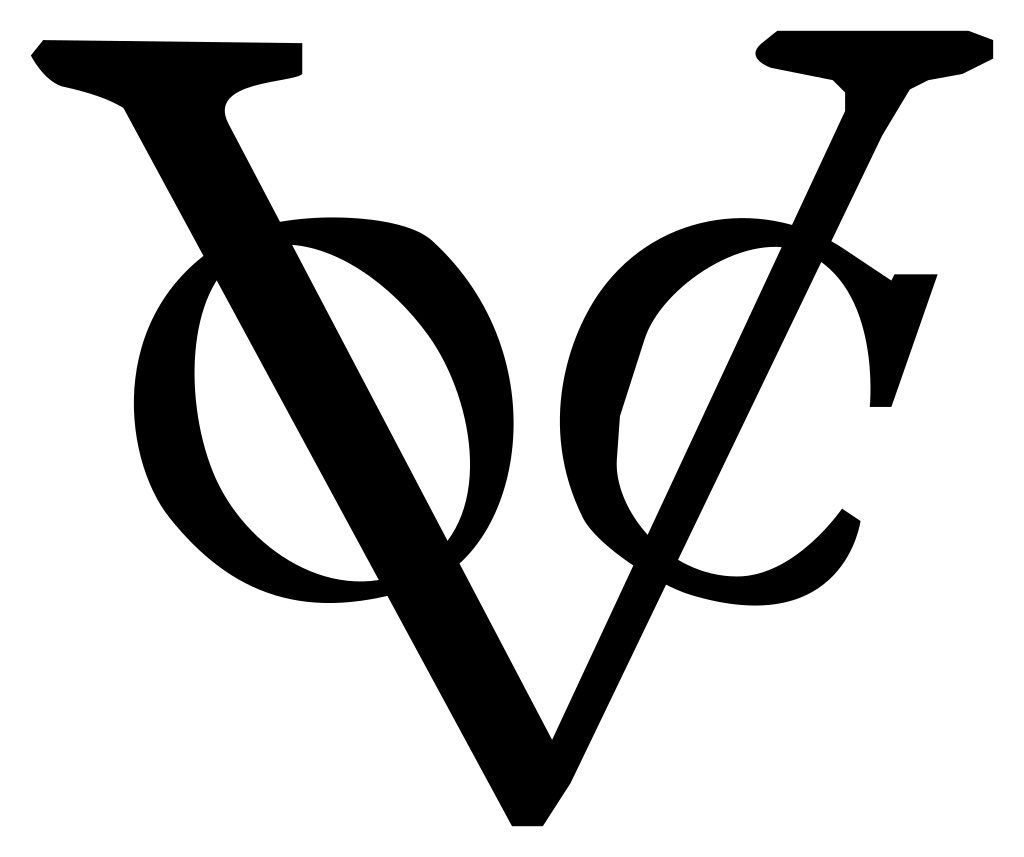
Private Banking activities in Gibraltar in September 2008[
ScotiaMocatta was formed by Scotiabank's acquisition of Mocatta Bullion from Standard Chartered Bank in 1997. They acquired it from Hambros Bank in 1973.
The company dates back to Moses Mocatta, immigrant from Amsterdam
ScotiaMocatta was formed by Scotiabank's acquisition of Mocatta Bullion from Standard Chartered Bank in 1997. They acquired it from Hambros Bank in 1973.
The company dates back to Moses Mocatta, immigrant from Amsterdam
to London. 1671, in London, he established a shop for gold, silver, and diamonds, then opened an account with the English goldsmith-banker Edward Backwell (ca. 1618–1683). Moses Mocatta sent silver to India in 1676, because silver was cheaper in London than in Bombay or Shanghai.
1684, the bullion dealer and refiner ″Mocatta″ was developed to serve as a broker to the Bank of England and the East India Company in the 18th and 19th centuries.
The origin of the name Mocatta is unknown. Potential origins include: (i) Mukattil, Arabic for champion, or



The origin of the name Mocatta is unknown. Potential origins include: (i) Mukattil, Arabic for champion, or

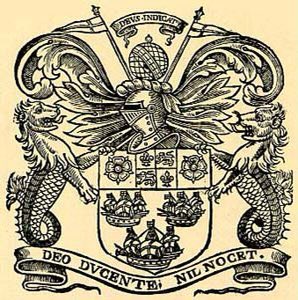
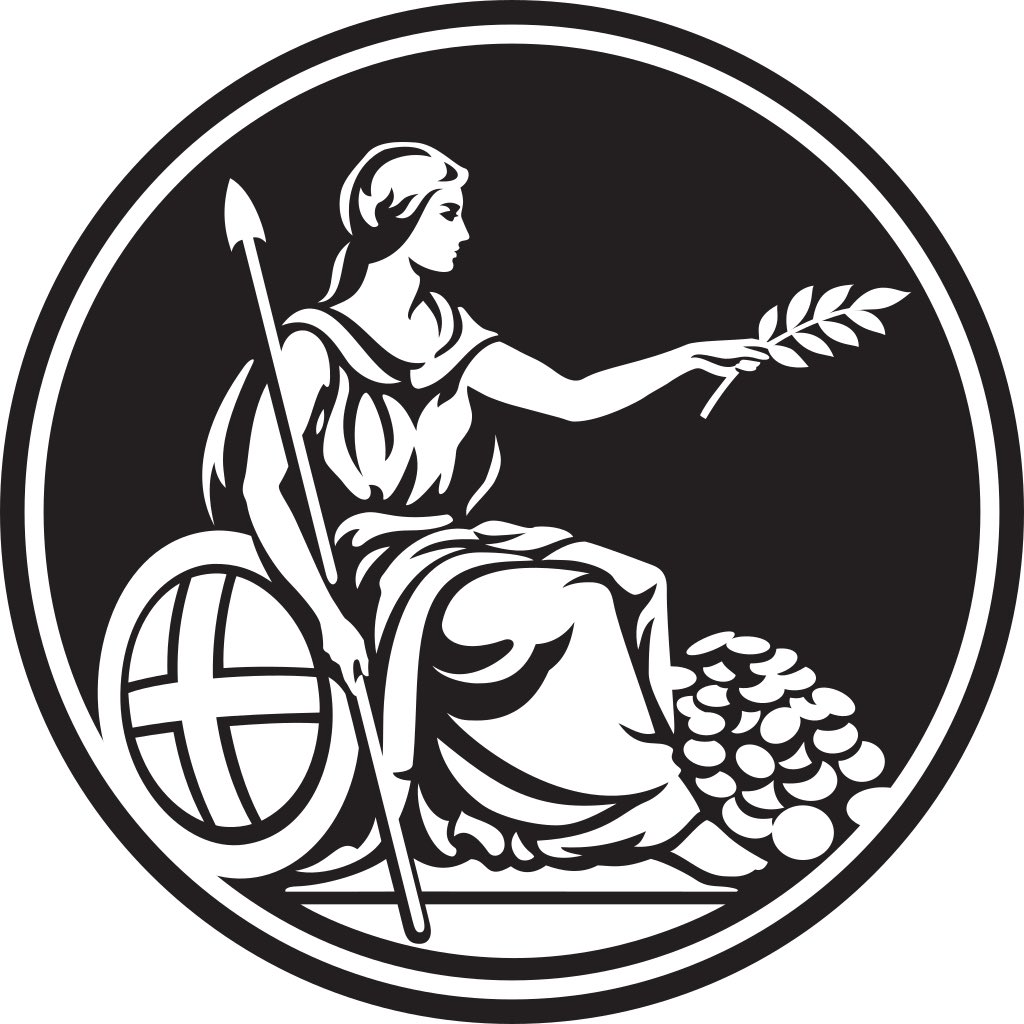
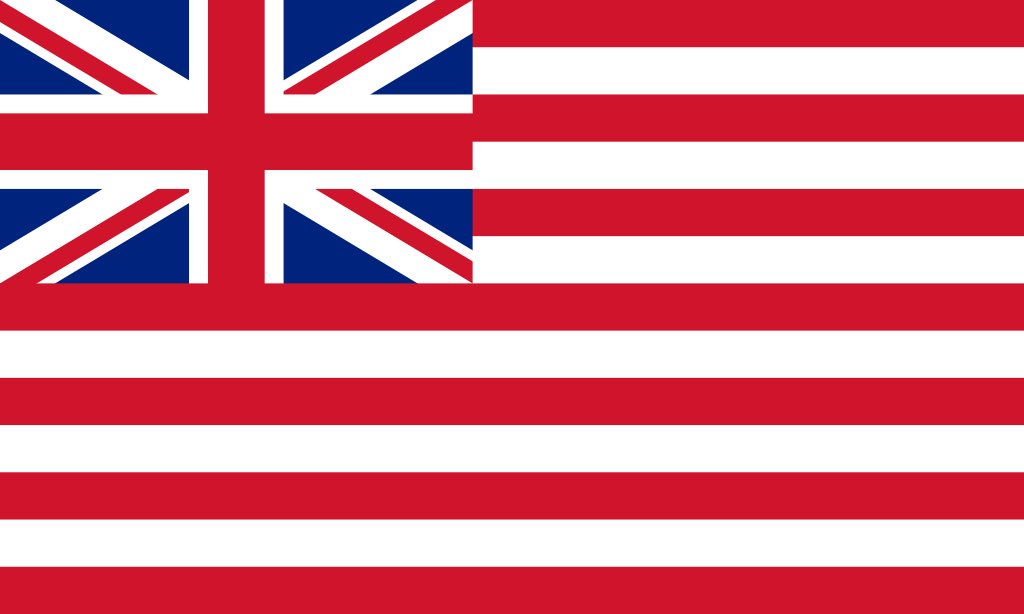
(ii) a river called Wadi Mokatta, or (iii) Mukataa, Arabic for fortress. The family left Spain in 1492, settling in France, the Netherlands and Italy, after the Alhambra Decree expelled Jews and Muslims from Spain, not long after the beginning of the Spanish Inquisition. Some
moved to England following Oliver Cromwell's readmission of Jews to England.
n the mid 17th century, Antonio de Marchena, from a branch of the Mocatta family that had stayed in Spain and ostensibly become Catholic, left for the Netherlands, and was welcomed back into the
n the mid 17th century, Antonio de Marchena, from a branch of the Mocatta family that had stayed in Spain and ostensibly become Catholic, left for the Netherlands, and was welcomed back into the
Amsterdam Spanish & Portuguese community, adopting the name Moses Mocatta.
By 1670, Moses Mocatta had taken his family to London, and in 1671, he founded a bullion brokerage firm in Camomile Street in the City of London; renamed Mocatta & Goldsmid in 1799, after Asher Goldsmid
By 1670, Moses Mocatta had taken his family to London, and in 1671, he founded a bullion brokerage firm in Camomile Street in the City of London; renamed Mocatta & Goldsmid in 1799, after Asher Goldsmid
was admitted as partner in 1787.
The world's oldest bullion house, it exists today largely as ScotiaMocatta.
Sir Stewart Menzies, the head of MI6 (who was generally known simply as "C") soon decided that a separate Special Operations branch was unsound, and merged it into the
The world's oldest bullion house, it exists today largely as ScotiaMocatta.
Sir Stewart Menzies, the head of MI6 (who was generally known simply as "C") soon decided that a separate Special Operations branch was unsound, and merged it into the
general body of MI6.
Gubbins, the last director, was not given further employment by the Army, but he later founded the Special Forces Club for former members of SOE and similar organisations.
The Club is located in Knightsbridge, London; the building is not owned by the club,
Gubbins, the last director, was not given further employment by the Army, but he later founded the Special Forces Club for former members of SOE and similar organisations.
The Club is located in Knightsbridge, London; the building is not owned by the club,
but is leased from Cadogan Estates.
The Cadogan Estates owes its origins to Sir Hans Sloane, a well-known explorer, physician and collector, who purchased the manor of Chelsea in 1712 and the 10-acre site of Beaufort House at Cheyne Walk in 1737.

The Cadogan Estates owes its origins to Sir Hans Sloane, a well-known explorer, physician and collector, who purchased the manor of Chelsea in 1712 and the 10-acre site of Beaufort House at Cheyne Walk in 1737.
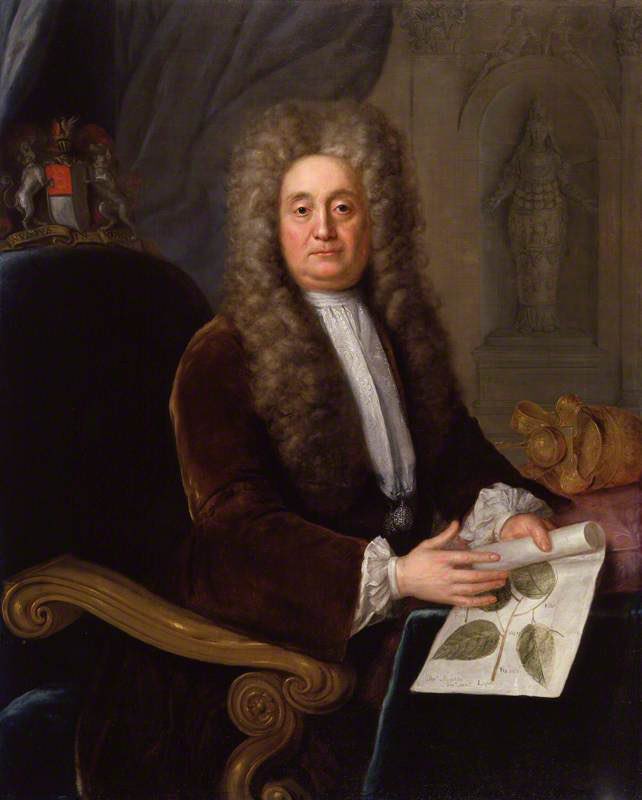
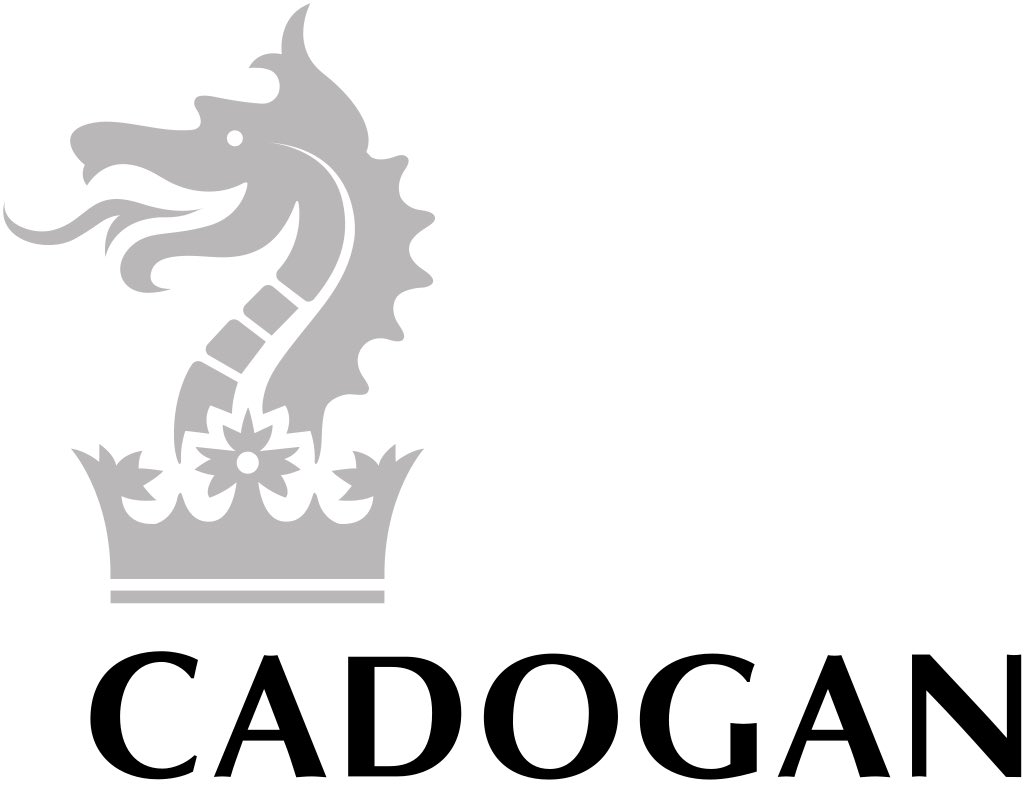
In 1777, Charles Sloane Cadogan – then Earl Cadogan – granted a lease to architect Henry Holland to create the first ever purpose-built new town. "Hans Town" provided attractive Georgian terraced houses to people of moderately affluent means. Jane Austen and her brother lived in
one; William Wilberforce, who led the movement to abolish slavery, in another.
Wilberforce supported the campaign for the complete abolition of slavery, and continued his involvement after 1826, when he resigned from Parliament because of his failing health. That campaign led to
Wilberforce supported the campaign for the complete abolition of slavery, and continued his involvement after 1826, when he resigned from Parliament because of his failing health. That campaign led to
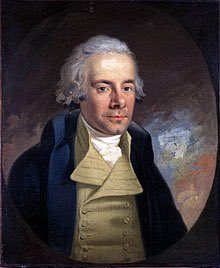
the Slavery Abolition Act 1833, which abolished slavery in most of the British Empire. Wilberforce died just three days after hearing that the passage of the Act through Parliament was assured. He was buried in Westminster Abbey, close to his friend William Pitt the Younger.
The Slavery Abolition Act 1833 (3 & 4 Will. IV c. 73) provided for the immediate abolition of slavery in most parts of the British Empire. This Act of the Parliament of the United Kingdom expanded the jurisdiction of the Slave Trade Act 1807 and made the purchase or ownership of
slaves illegal within the British Empire, with the exception of "the Territories in the Possession of the East India Company", Ceylon (now Sri Lanka), and Saint Helena.
The Act provided for payments to slave-owners. The amount of money to be spent on the payments was set at
The Act provided for payments to slave-owners. The amount of money to be spent on the payments was set at
"the Sum of Twenty Million Pounds Sterling". Under the terms of the Act, the British government raised £20 million to pay out for the loss of the slaves as business assets to the registered owners of the freed slaves. In 1833, £20 million amounted to 40% of the Treasury's annual
income or approximately 5% of British GDP at the time.
To finance the payments, the British government took on a £15 million loan, finalised on 3 August 1835, with banker Nathan Mayer Rothschild and his brother-in-law Moses Montefiore; £5 million was paid out directly in

To finance the payments, the British government took on a £15 million loan, finalised on 3 August 1835, with banker Nathan Mayer Rothschild and his brother-in-law Moses Montefiore; £5 million was paid out directly in
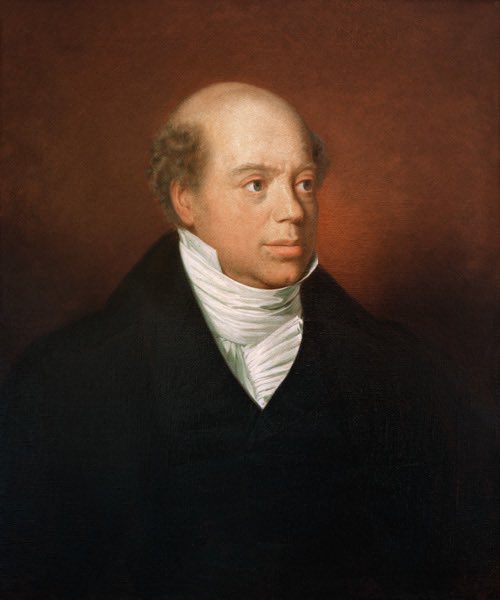

government stock, worth £1.5 billion in present day.
In 1812, Moses Montefiore married Judith Cohen (1784–1862), daughter of Levy Barent Cohen. Her sister, Henriette (or Hannah) Cohen (1783–1850), married Nathan Mayer Rothschild (1777–1836), for whom Montefiore's firm acted as
In 1812, Moses Montefiore married Judith Cohen (1784–1862), daughter of Levy Barent Cohen. Her sister, Henriette (or Hannah) Cohen (1783–1850), married Nathan Mayer Rothschild (1777–1836), for whom Montefiore's firm acted as
stockbrokers. Nathan Rothschild headed the family's banking business in Britain, and the two brothers-in-law became business partners. In business, he was an innovator, investing in the supply of piped gas for street lighting to European cities via the Imperial Continental Gas
Association. In 1824 he was among the founding consortium of the Alliance Life Assurance Company (which later merged with Sun Insurance to form Sun Alliance).
In 1854 Moses [Mt. Flowers or Blumberg] Montefiore friend Judah Touro, a wealthy American Jew, died having bequeathed
In 1854 Moses [Mt. Flowers or Blumberg] Montefiore friend Judah Touro, a wealthy American Jew, died having bequeathed
money to fund Jewish residential settlement in Palestine. Montefiore was appointed executor of his will, and used the funds for a variety of projects aimed at encouraging the Jews to engage in productive labor.
Judah Touro's father Isaac Touro of Holland was chosen as the
Judah Touro's father Isaac Touro of Holland was chosen as the
hazzan at the Touro Synagogue in 1762, a Portuguese Sephardic congregation in Newport, Rhode Island.
The family moved to New York in 1780 after the British occupied Newport during the American Revolutionary war; they moved to Kingston, Jamaica in 1782. Isaac died in 1783, and
The family moved to New York in 1780 after the British occupied Newport during the American Revolutionary war; they moved to Kingston, Jamaica in 1782. Isaac died in 1783, and
his wife Reyna moved the family to Boston to live with her brother Moses Michael Hays.
Moses Michael Hays established the New England Masonic movement and in 1792 was elected as Grand Master, with Paul Revere as his deputy.
“The redcoats are coming!" Paul Revere shouted, "The

Moses Michael Hays established the New England Masonic movement and in 1792 was elected as Grand Master, with Paul Revere as his deputy.
“The redcoats are coming!" Paul Revere shouted, "The
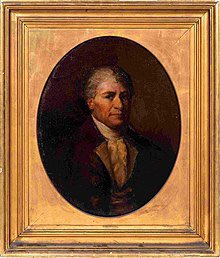
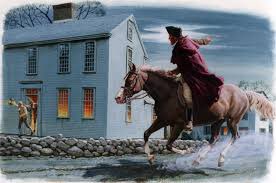
British are coming!!”
The name "Rothschild" in Yiddish means Red Coat, in reference to a heraldic coat of arms.
In 1784, Hays became a founder and the first depositor of the Massachusetts Bank, still doing business today as part of the Bank of America.
The name "Rothschild" in Yiddish means Red Coat, in reference to a heraldic coat of arms.
In 1784, Hays became a founder and the first depositor of the Massachusetts Bank, still doing business today as part of the Bank of America.
In 1903, The Massachusetts Bank merged with The First National Bank of Boston.
Following the passage of the Glass–Steagall Act in 1933, which prohibited commercial banks from engaging in investment banking and securities dealing, First National Bank of Boston was forced to
Following the passage of the Glass–Steagall Act in 1933, which prohibited commercial banks from engaging in investment banking and securities dealing, First National Bank of Boston was forced to
divest its investment banking arm, the First Boston Corporation.
The First Boston Corporation was a New York-based bulge bracket investment bank, founded in 1932 and acquired by Credit Suisse in 1990. Together with its sister investment banks, it was referred to as CS First
The First Boston Corporation was a New York-based bulge bracket investment bank, founded in 1932 and acquired by Credit Suisse in 1990. Together with its sister investment banks, it was referred to as CS First
Boston after 1993 and part of Credit Suisse First Boston after 1996.
The First Boston part of the name was phased out by 2006.
BlackRock was founded in 1988 by Larry Fink, Robert S. Kapito, Susan Wagner, Barbara Novick, Ben Golub, Hugh Frater, Ralph Schlosstein, and Keith
The First Boston part of the name was phased out by 2006.
BlackRock was founded in 1988 by Larry Fink, Robert S. Kapito, Susan Wagner, Barbara Novick, Ben Golub, Hugh Frater, Ralph Schlosstein, and Keith
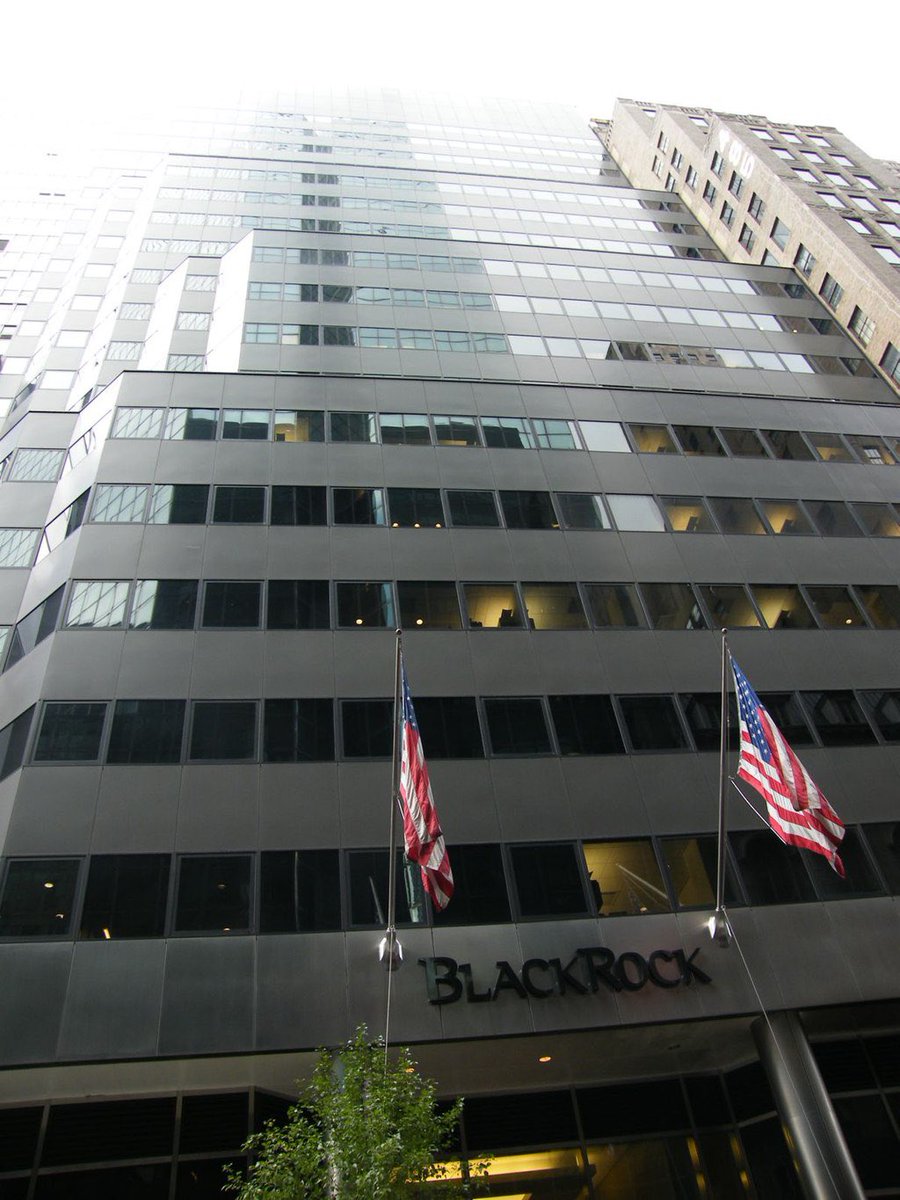
Anderson to provide institutional clients with asset management services from a risk management perspective. Fink, Kapito, Golub and Novick had worked together at First Boston, where Fink and his team were pioneers in the mortgage-backed securities market in the United States. 

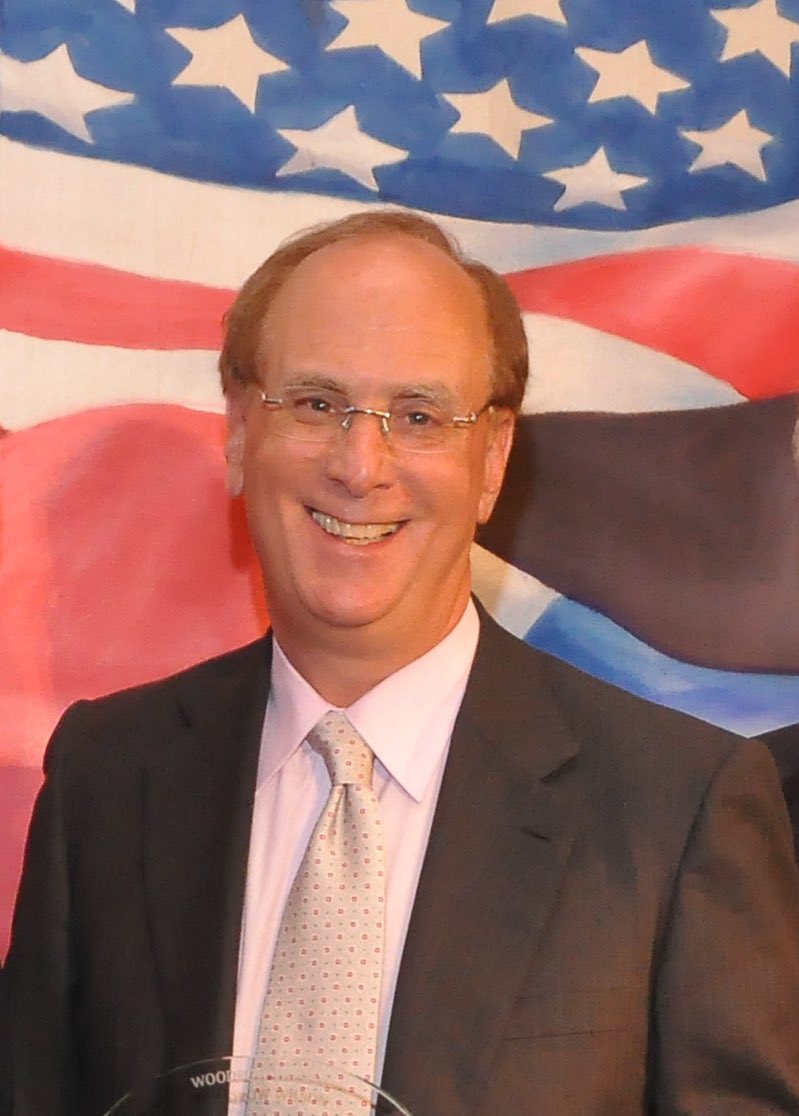
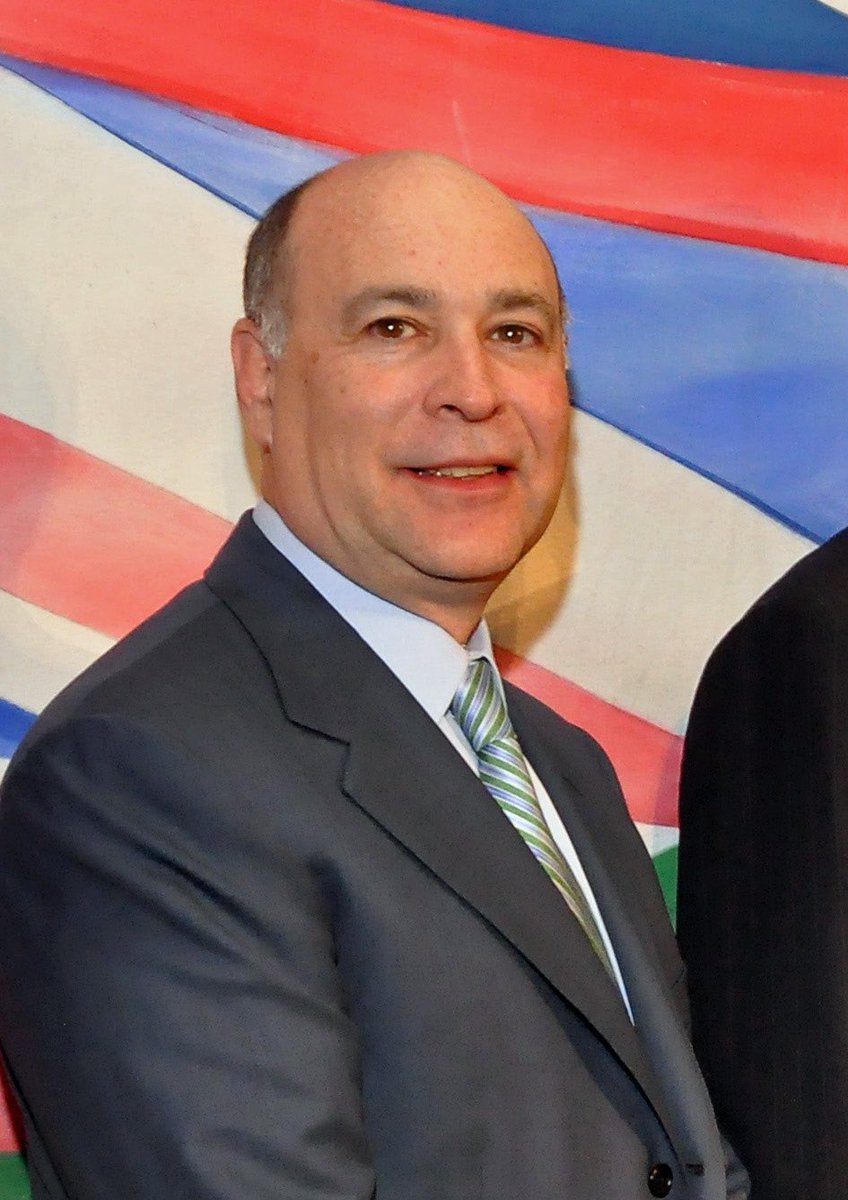
During Fink's tenure, he had lost $100 million as head of First Boston. That experience was the motivation to develop what he and the others considered to be excellent risk management and fiduciary practices. Initially, Fink sought funding (for initial operating capital) from
Pete Peterson of The Blackstone Group who believed in Fink's vision of a firm devoted to risk management. Peterson called it Blackstone Financial Management.
The U.S. government contracted with BlackRock to help resolve the fallout of the financial meltdown of 2008. According to

The U.S. government contracted with BlackRock to help resolve the fallout of the financial meltdown of 2008. According to
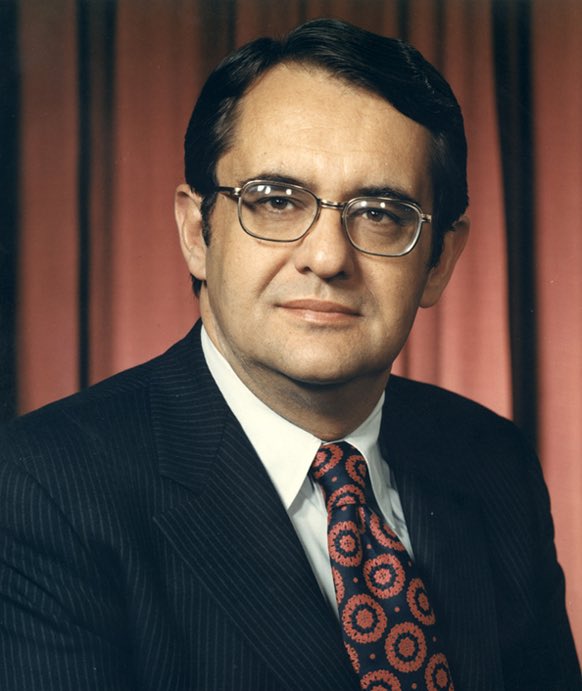
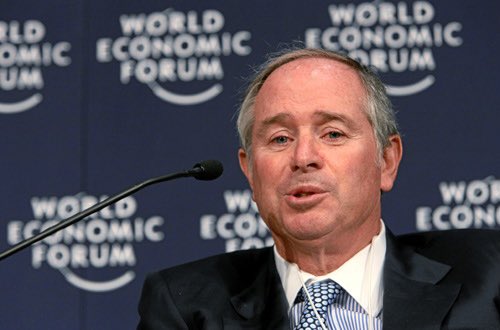
Vanity Fair, the financial establishment in Washington and on Wall Street believed BlackRock was the best choice for the job. The Federal Reserve allowed BlackRock to superintend the $130 billion-debt settlement of Bear Stearns and American International Group. 



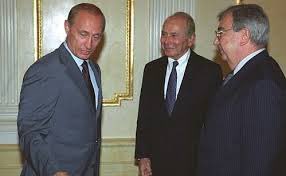
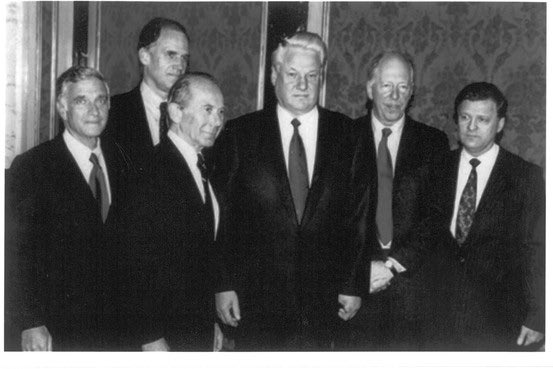
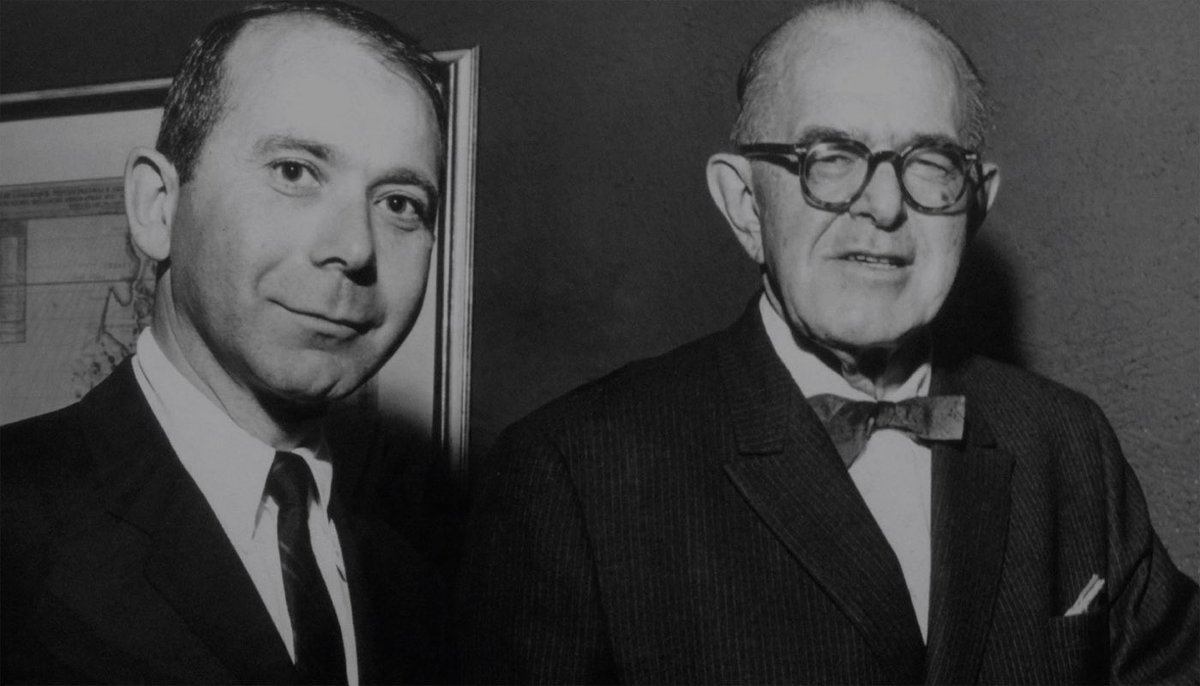
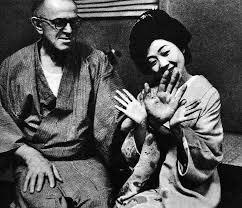
In February 2000, AIG created a strategic advisory venture team with the Blackstone Group and Kissinger Associates "to provide financial advisory services to corporations seeking high level independent strategic advice".
Kissinger was then appointed to Georgetown University's
Kissinger was then appointed to Georgetown University's
Center for Strategic and International Studies. He taught at Georgetown's Edmund Walsh School of Foreign Service for several years in the late 1970s. In 1982, with the help of a loan from the international banking firm of E.M. Warburg, Pincus and Company, Kissinger founded a
consulting firm, Kissinger Associates, and is a partner in affiliate Kissinger McLarty Associates with Mack McLarty, former chief of staff to President Bill Clinton. He also serves on the board of directors of Hollinger International, a Chicago-based newspaper group, and as of
March 1999, was a director of Gulfstream Aerospace.
In 1939, Eric Warburg of the Warburg banking family founded a company under the name E.M. Warburg & Co. Its first address was 52 William Street, New York, the Kuhn Loeb building. Throughout the early post-war period, the firm
In 1939, Eric Warburg of the Warburg banking family founded a company under the name E.M. Warburg & Co. Its first address was 52 William Street, New York, the Kuhn Loeb building. Throughout the early post-war period, the firm
was a small office of 20 employees. In 1966, E.M. Warburg merged with Lionel I. Pincus & Co, forming a new company that eventually became known as E.M. Warburg, Pincus & Co. In 1965, when Eric Warburg retired to Germany, control was handed to Lionel Pincus, a partner in the
Ladenburg Thalmann investment bank, and the working language of the office switched from German to English.
Warburg was born to a Jewish family in Hamburg, Germany on April 15, 1900 His parents were Alice (née Magnus) and Max Warburg, director of M. M. Warburg & Co. and scion
Warburg was born to a Jewish family in Hamburg, Germany on April 15, 1900 His parents were Alice (née Magnus) and Max Warburg, director of M. M. Warburg & Co. and scion
of the Warburg banking family.
Max Warburg was one of seven children born to Moritz Warburg, the director of the family's Hamburg bank, and his wife Charlotte Oppenheim of the Oppenheim family, another prominent German-Jewish banking family.
His siblings were art historian and
Max Warburg was one of seven children born to Moritz Warburg, the director of the family's Hamburg bank, and his wife Charlotte Oppenheim of the Oppenheim family, another prominent German-Jewish banking family.
His siblings were art historian and
cultural theorist Abraham Warburg; chief architect of the Federal Reserve Board of the United States Paul Warburg; Felix, son-in-law to Jacob Schiff and partner at Kuhn, Loeb & Co.; Fritz; Olga; and Louisa.
From 1933, Max served on the board of the German Reichsbank with
From 1933, Max served on the board of the German Reichsbank with
governor Hjalmar Schacht.
In 1926, Schacht provided funds for the formation of IG Farben. He collaborated with other prominent economists to form the 1929 Young Plan to modify the way that war reparations were paid after Germany's economy was destabilizing under the Dawes
In 1926, Schacht provided funds for the formation of IG Farben. He collaborated with other prominent economists to form the 1929 Young Plan to modify the way that war reparations were paid after Germany's economy was destabilizing under the Dawes
Plan.
Schacht became a friend of the Governor of the Bank of England, Montagu Norman, both men belonging to the Anglo-German Fellowship and the Bank for International Settlements (BIS).
The Anglo-German Fellowship organisation was aimed at the influential in society, and the
Schacht became a friend of the Governor of the Bank of England, Montagu Norman, both men belonging to the Anglo-German Fellowship and the Bank for International Settlements (BIS).
The Anglo-German Fellowship organisation was aimed at the influential in society, and the
membership was dominated by businessmen keen to promote commercial links. Members included Bank of England director Frank Cyril Tiarks, Admiral Sir Barry Domvile, Prince von Bismarck, Governor of the Bank of England Montagu Norman, Geoffrey Dawson editor of The Times.
AGF was
AGF was
established in September 1935 with Lord Mount Temple his daughter Edwina, Countess Mountbatten of Burma (1901–1960), married The 1st Earl Mountbatten of Burma (1900–1979). 


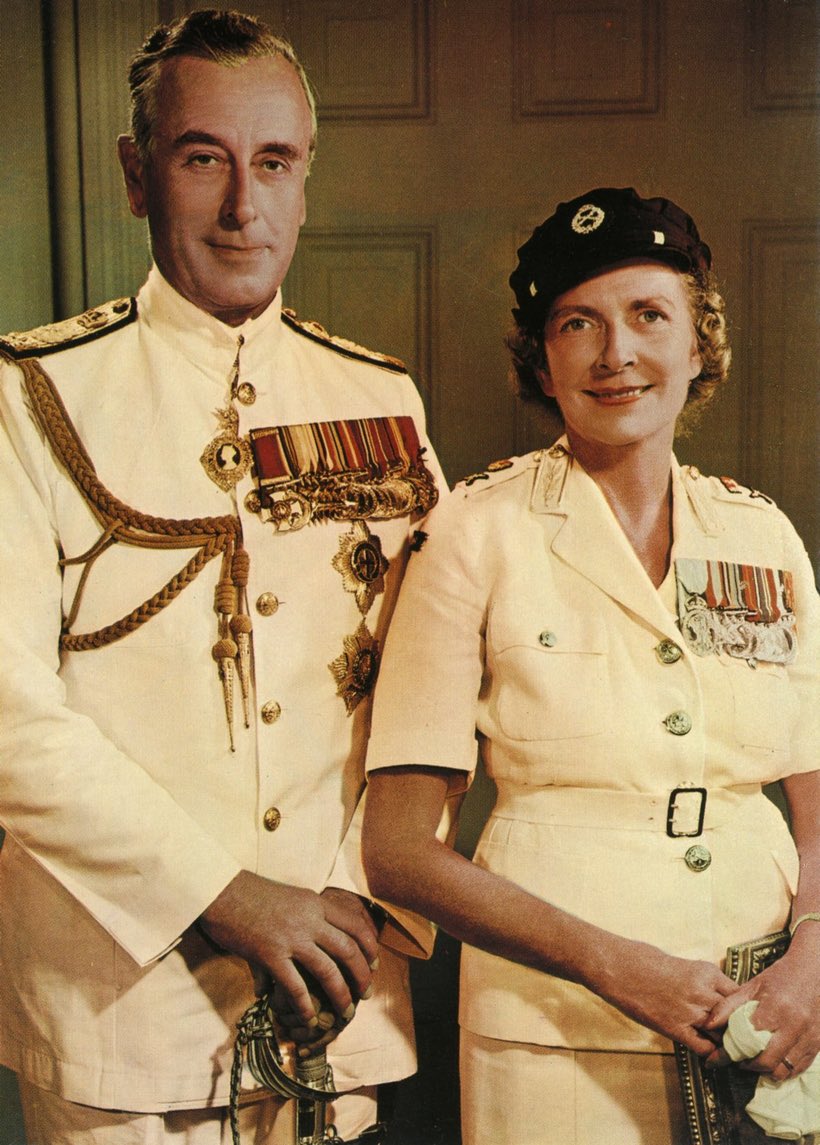

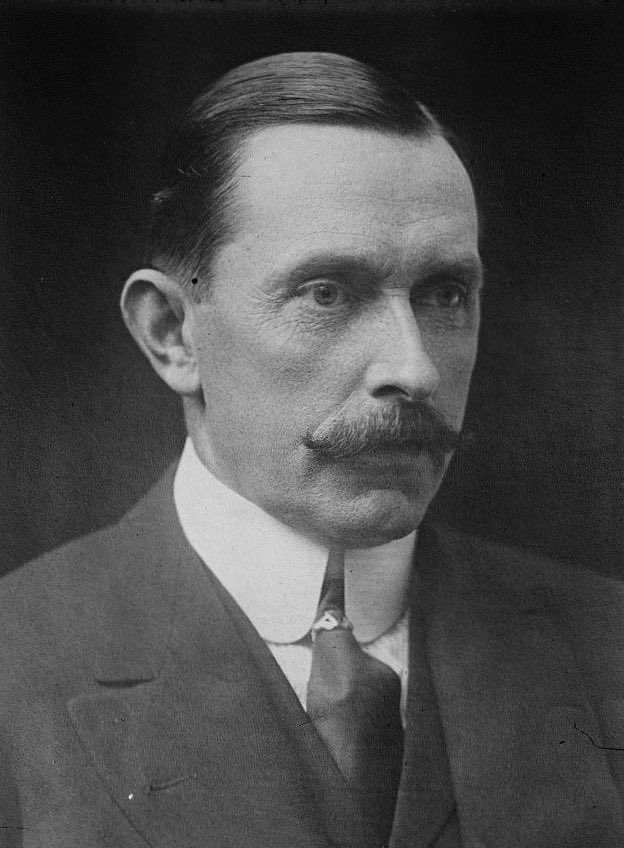
• • •
Missing some Tweet in this thread? You can try to
force a refresh



